

Bulletin
The
APEA (The Association for Petroleum and Explosives Administration)
MAGAZINE - June 2024

How to Win at the Game of Monopoly Or: Are there Challenges and “Bumps in the Road” on the Journey to Fuel Transition?
Combatting Groundwater Ingress in Underground Fuel Systems: A Technical Overview
Future Fleets:Are You Keeping Up with The Trends? By Lise-Lotte Nordholm, VP & GM Clean Energy and Global Platforms at Dover Fueling Solutions
Rapid Change Ahead For Mobility – Are We All Ready?
Not all Tank Lining Systems are the Same…
Independent Connection Providers (ICP) Explained
Hydrogen: Why Your Investment isn’t Up in the Air
Reduce, Reuse, Recycle: Mike Colohan on Decommissioned Tanks and Residual Fuels
The 3 Reasons Businesses Should ALWAYS Prioritise Safety When Decommissioning Fuel and Leachate Tanks
MCS Fuel Management Systems – Your Ultimate Solution for Streamlined Operations and Enhanced Savings
Entering the APEA Awards… 4 Learnings from Over a Decade Behind the Scenes
Pricing for EV Charging Hubs
News
Press Releases
Branches
Training
Ask the Experts
APEA Live 2024 Conference, Exhibition and Awards Dinner
Opinions expressed in this magazine are not necessarily the views of the Association. The technical content is not an official endorsement by or on behalf of the APEA and are entirely the views of the authors.
Inside Inside APEA tel: 0345 603 5507 www.apea.org.uk 3
Published by the APEA (The Association for Petroleum and Explosives Administration) A company Limited by Guarantee Registered in England No. 2261660. Front cover: Dispensing from the canopy in Japan, credit to Andy Kennedy 4 6 8 10 10 14 22 26 29 30 32 36 38 40 44 48 52 54 64 68 70 79 80 Welcome Editorial Business Manager New Members Publications Information
Welcome
 Michael O’Connell APEA Chairman
Michael O’Connell APEA Chairman
Welcome to the June edition of The Bulletin. This year is certainly up and running now and is shaping up to be a very busy one! With all that is happening this year it is a great time to be a member of APEA and keep up with all that is going on in the industry.
I hope you enjoy this edition of The Bulletin. It is full of interesting articles relevant to our industry. As we are in a sustained period of change and the supporting technologies are progressing at pace The Bulletin is a great source of information on how the industry is innovating and reacting to the changing environment we work in. I hope you also take the time to look through our advertisements as their continued support contributes to the high quality of this publication.
The benefits of APEA membership this year in particular are significant. The array of training courses scheduled can be viewed on the APEA website and are all available to members at a discounted rate. A hard copy of the 5th Edition of the Blue Book will also be provided to all current APEA members when it is published shortly.
With the move away from fossil fuels continuing, one issue I have noticed cropping up a number of times recently at Petrol Filling Stations (PFS’s) is the introduction of alternative fuelling infrastructures on existing forecourts which is causing problems. The main culprit in this instance is the installation of EV charging
APEA Business Manager
(contact for all APEA Business and Bulletin advertising, design and typesetting)
Jane Mardell
APEA, PO Box 106
Saffron Walden, Essex CB11 3XT
Tel: +44 (0) 345 603 5507
Mobile: +44 (0) 7815 055514
email: admin@apea.org.uk
Find us on Linkedin and Twitter
into existing fuel stations. Firstly, consider the location of both the EV charger and the vehicle charging at the maximum extent of the cable. They must both be located outside the hazardous zones associated with the existing fuelling infrastructure onsite. Furthermore, and from a fire safety viewpoint, please consider that an electric car, should it catch fire, will be difficult to extinguish and will burn at a very high temperature. This extreme heat may impact on everything in the immediate vicinity of the EV on fire and consideration should be given to locating the EV charging infrastructure in an area that gives maximum protection to the existing:-
•Underground fuel tanks/fill points access chambers
•Overground diesel/kerosene/HVO/lubricant tanks
•LPG/CNG storage tanks/cylinders
•Solid fuel storage
•Buildings/commercial units etc.
There is quite a lot to consider when designing and installing an EV charging infrastructure in an existing site. It is, I believe, a worthwhile exercise engaging beforehand with all the experts in the areas outlined above to ensure the best outcome is achieved prior to undertaking this type of project. The Blue Book and the IET Code of Practice provide excellent guidance for EV installations at PFS’s. The introduction of Hydrotreated Vegetable Oil (HVO) to an existing forecourt is less problematic as it usually involves the repurposing of an existing fuel tank or in some cases the introduction of a new above ground bunded tank. Consideration must be given to the existing hazardous areas identified and what impact/changes if any the introduction of HVO will have on them. Furthermore, as the HVO infrastructure should be protected by the contained drainage systems onsite, operators should ensure that the introduction of any new above ground bunded tanks are located in a suitably (drainage) protected area.
Finally, please support your local APEA Branch. They would be delighted to hear from any members/potential members who are interested in attending or indeed presenting at their meetings. The contact details for all the APEA branches are available on the APEA website.
Editor
Brian Humm
Mobile: +44 (0) 7507 478533
email: b.humm@outlook.com


Welcome APEA tel: 0345 603 5507 www.apea.org.uk 4

Editorial

Brian Humm Editor
Welcome to the latest edition of the APEA Bulletin. Once again I hope that members enjoy the work that has gone into the production of this publication. We rarely get praise but last week I received a phone call from an ex colleague of mine from the London Fire Brigade, Bryan Catcheside, who was a senior inspector when I joined and on retirement was responsible for the introduction of the BTEC in petroleum regulations, sadly no longer available. Bryan was very complimentary of The Bulletin and its content. I had to say that Jane is responsible for the layout, typesetting etc (Jane makes my rubbish look good) so it was nice to get a compliment and thank you Bryan, glad you enjoy it.
I am going to make my usual plea for copy to go into The Bulletin. As usual it has been challenging to find suitable news and articles for publication; we have to rely on members to send stuff in. We are always grateful for what is sent to us, but we would still like more! Anything you think of to be honest; if it is a project that you have undertaken, something unusual maybe, a business milestone, literally anything that you can possibly think of. My favourite subject is ‘ask the experts’; it’s something that tests the old grey matter, and so I look forward to your submissions for the next issue.
The long-awaited Red Guide update has appeared on the Energy Institute website, long awaited I know but it is welcome and now includes the guidance for paying for fuel at the dispenser using your touch phone (Apple pay etc.). It shows, in detail, the signage that is required to be displayed and basically it is telling the customer that the phone is to be used for the authorisation only. It also reiterates the existing guidance regarding the pay at pump apps introduced by the likes of bp and Shell. Interesting times ahead, plenty of discussion to be had and many old petroleum officers mumbling disapproval. Let us wait and see what happens. In the world of petrol, it is extremely important that anyone who
is engaged with, working on or around a forecourt, has the appropriate training.
Contractors, company staff, even petroleum inspectors are expected to show a level of competency in order to undertake their work, even the smallest of tasks. It reminds me of the incident that occurred in north London a few years ago; a company were contracted to remove some tanks from an old petrol site, they had no experience of this type of work, and to cut a long story short, a worker was fatally injured when trying to hot cut a tank without checking it was gas free. The following day I received four phone calls from demolition contractors who had taken jobs on filling stations and had no experience or knowledge whatsoever in this area - they were awarded the job on price alone. Scary!
There is training available within the industry, and it is vital that all operatives undergo training and are competent in the role that they are undertaking. Makes sense to be honest; everyone should go home safe at the end of the working day.
Speaking of training, the APEA training team have been hard at work lately, mainly undertaking bespoke courses. Cyprus, West Yorkshire Fire Service and the London Fire Brigade (LFB) all received training courses; the LFB had all the courses delivered that we offer as they are currently rebuilding their petroleum section. All the training was well received, and you can see reports and photographs from the sessions at the end of this Bulletin.
Where does the time go? They do say that when you get older everything speeds up and they’re not wrong! APEA Live 2024 is getting ever closer, the must-go-to event within our industry. I must admit that I enjoy the event every year, the networking and meeting members at the exhibition is definitely my favourite part, it’s always good to put faces to names (and the other way round). Mind you I forget names as soon as I’m told them so the age thing is creeping up on me.
Have you thought of attending? Regulators are always welcome, and one reason that we made the exhibition free to enter was to attract local authorities. We can also give CPD for attendance so if you haven’t attended, as a PEA enforcer, then why not consider attending this year? Well worth a visit and an opportunity to look at the latest innovations and equipment that is currently available for forecourts etc. If anyone needs any more information then the details are further on within this publication.
I hope you enjoy your read, until next time…
6APEA tel: 0345 603 5507 www.apea.org.uk Editorial

Business Manager
 Jane Mardell Business Manager
Jane Mardell Business Manager
I have been busy working on the 2025 Yearbook which is complete, and this is on track to be delivered to members around 1st October. Organising has also started on APEA Live 2024.
The Bulletin
We are always looking for press releases and articles for The Bulletin. If you have anything you think would interest our readers, please email it to me at admin@apea.org.uk and I will forward it to the editor Brian Humm to approve. Bulletin advertisers benefit from priority when submitting press releases and articles. Information on page 12.
2025 Yearbook
Thanks to all of you that completed entries online for the 2025 Yearbook and to the advertisers who, without your bookings, we would not be able to produce this publication.
The artwork is at the printers and the Yearbooks will be distributed on 1st October. If you have not received your copy by the end of October please let me know and I will chase up your delivery. We only have a limited number of spare copies so you need to contact me by the end of October if you have not received your copy.
Individual/Retired members in the UK and Corporate members overseas will be sent their Yearbooks by standard Royal Mail. Corporate members in the UK will receive their 5 copies by courier which are tracked, so we can follow up any non-deliveries.
APEA Live 2024 – 14th November
Anyone wishing to book a place at the Conference, Exhibition or Awards Dinner should go to www.apealive.co.uk/2024/. Please note there are discounts for ‘early bird’ booking. I will be managing the APEA participation and AGM part of the event and information and nomination forms will be sent to all members with the September issue of The Bulletin in August.
APEA Awards
The APEA Awards are live and you can enter the awards by going
to www.apealive.co.uk/2024/awards/about-apea-awards/ Deadline for entries: 20th September 2024.
Website Banner Advertising
You can place your banner on the APEA website. This is £200 plus vat for one year. Please contact me at admin@apea.org.uk if you wish to make a booking.
Membership information/Your membership account
You can place your banner on the APEA website. This is £200 plus VAT for one year. Please contact me at admin@apea.org.uk if you wish to make a booking.
Membership information/Your membership account
Please go to your membership account at www.apea.org.uk where you can do the following:
•Download a membership certificate in pdf format
•View previous purchases and invoices
•Change your membership
•Change your email address, contact details and password
•Change your Yearbook entry
•View your downloads
Unfortunately we are still having a few glitches with the website so please bear with us. Any problems please email me at admin@apea.org.uk.
Training Courses
All training courses can be viewed and booked on the APEA website at www.apea.org.uk. If you are interested in booking a bespoke training course please email Tom Daly (Chairman of Training Committee) at thomasdaly@apea.org.uk.
Online training courses
Please go to the training page on the APEA website at www.apea.org.uk or go to: https://apea.org.uk/pages/training or https://apea.mykademy.com/
New Members
There have been 19 new members joining during January, February and March, details on page 10.
General Assistance
If you need any assistance with general or technical matters, please do not hesitate to contact me at admin@apea.org.uk or on 0345 603 5507. There is comprehensive contact information on the APEA website too at www.apea.org.uk.
Jane
tel: 0345 603 5507 www.apea.org.uk
8APEA
Business Manager
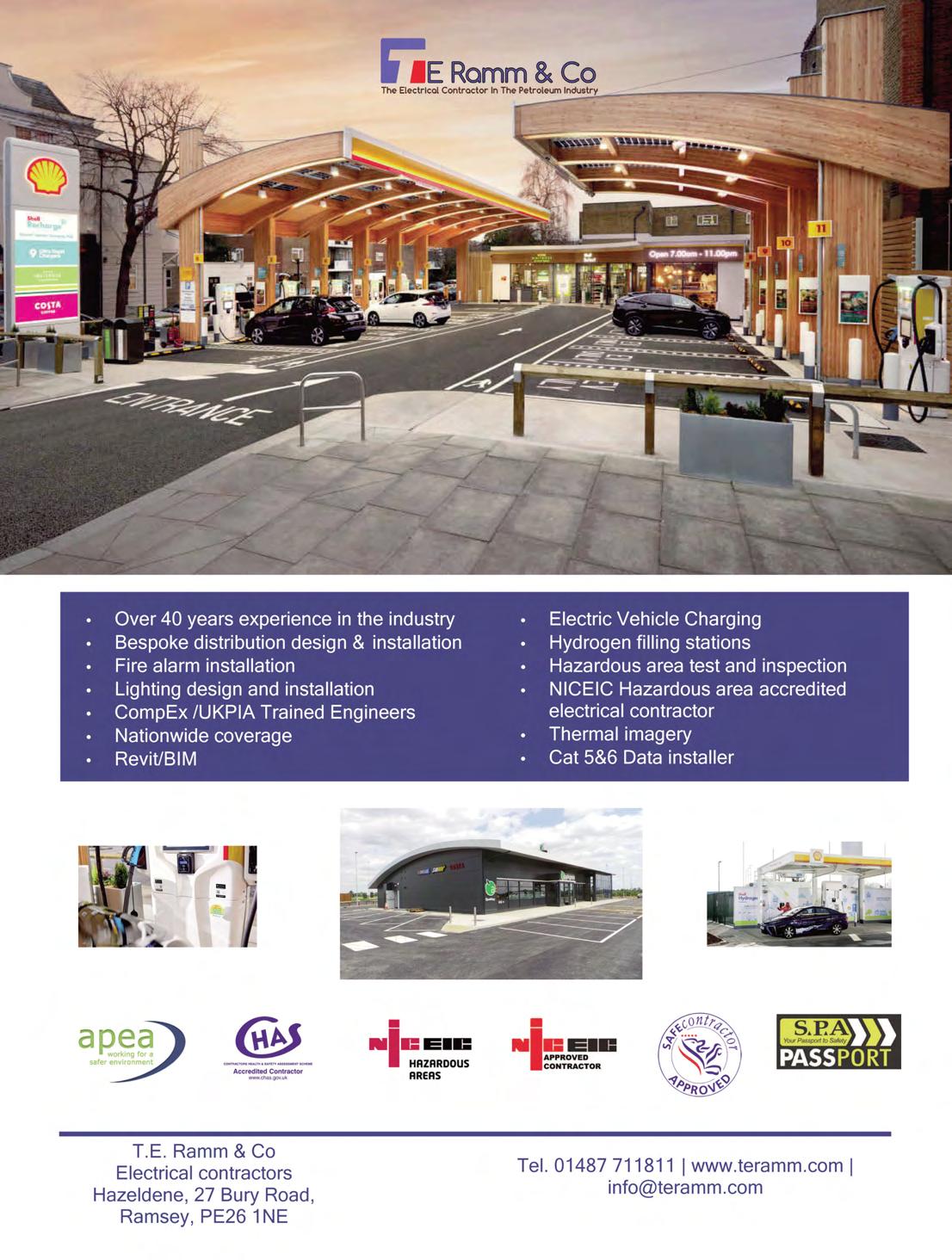
New Members/Publications Information
Corporate Membership
Adam Gaunt Stirling Council
Bobby Drummond City Facilities Management
Jackie Spink CHQ Architects Ltd
Jouni Aikas Suomen INFRA Palvelu Oy
Liz Bailey Luton Borough Council
Patrick Varley Birchel Construction Ltd
New Members (Jan - Mar) Publications Information
Individual Membership Andrew Taylor HSS
Carl Drakes Cumberland Council
Emma Hardiman bp
Jason Perrins Wincanton
John Garnett VARS Technology
Mark Boyce BP International Limited
Nigel Sheppard South Yorkshire Fire and Rescue
4th Edition of the Guidance for Design, Construction, Modification, Maintenance and Decommissioning of Filling Stations“Blue Book” (Revised 2018)
ISBN 978 0 85293 888 1
Price for hard copy
APEA Member rate - £75
Non APEA Member rate - £150
Price for pdf version (please note the pdf version is licensed to the purchaser only and cannot be shared or printed)
APEA Member rate - £75
Non APEA Member rate - pdf £150
If you wish to purchase the guide please go to the APEA website at www.apea.org.uk and click on the “Publications” page. You can select to pay by credit/debit card.
The APEA also publishes the Code of Practice for Ground floor, multi storey and underground car parks. This can be downloaded directly from the APEA website and is available to members at £11.00 and £21.00 to non APEA members.
Oluwasegun Moses Akinbobola Gasrec Limited
Paul Whiteley Regional Command Petroleum Inspectorate
Prince Delali Kuanaya GOIL PLC
Saravanan Rajavel Phillips66
Scott Duncan West Dunbartonshire
Susannah Moffat In The Park Services Ltd
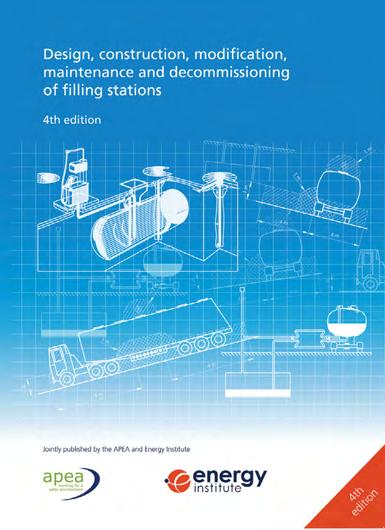
10APEA tel:
0345 603 5507 www.apea.org.uk


Electric Vehicle Charging Installations at Filling Stations
Price for hard copy
APEA Member rate - £32.50
Non APEA Member rate - £50
Price for pdf version (please note the pdf version is licensed to the purchaser only and cannot be shared or printed)
APEA Member rate - £32.50
Non APEA Member rate - pdf £50
This Code of Practice is an authoritative guide to all installations of electric vehicle charging equipment. It has been updated in line with recent changes in BS 7671 (IET Wiring Regulations) and reflects some major developments in this area including vehicle to grid, smart integration and inductive charging.
As part of the rapid growth and development of the whole electric vehicle charging infrastructure, filling stations are seen as an obvious place to provide charging facilities. However, it is recognised that difficult safety and logistical issues are linked to such installations.
When the 4th Edition of the Code of Practice for Electric Vehicle Charging Equipment Installation was published, significant technical discussions were still underway about this area to help finalise and clarify the safety issues that needed to be addressed. The work behind these meetings was led by APEA (the Association for Petroleum and Explosives Administration) who represent the major stakeholders in this sector. APEA and the IET are therefore now issuing this joint publication to help provide important guidance in this area.
ISBN-13: 978-1-83953-315-0
Publication Year: 2020 Pages: 30
11 APEA tel: 0345 603 5507 www.apea.org.uk Publications Information
About The Bulletin and how you can submit copy to be included
•The Bulletin is published four times a year with a print run of 2200
•Free issue to APEA members (approx 1200 members worldwide)
•Has international distribution and readership
•Respected source of industry specific news and information
•Contains relevant articles, news items, press releases and reports from UK and overseas
•Individual, Fellow and Retired members receive one copy each and Corporate members receive 5 copies each per quarter
The editor of The Bulletin, Brian Humm, is always on the look out for new material, so if you have something you want to be included, please email it to the APEA office at admin@apea.org.uk and it will be forwarded to Brian for approval.
Please email the text in Word format and any images as separate high resolution pdf or jpeg files to admin@apea.org.uk.
We are always pleased to receive contributions from our members and it ensures that The Bulletin remains an interesting and informative read.
Priority is given for press releases and articles submitted by Bulletin advertisers to be included.
Deadline dates for copy and advertising artwork 2024
Issue
Copy deadline date
Posting date
Sept 2024 2nd July 9th August
Dec 2024 2nd September 2nd November
March 2025 16th December 21st February
June 2025 24th March 16th May
Please note the deadline date for the March 2025 issue is early due to Christmas and New Year holidays.
Bulletin Advertising
If you would like to book advertising in The Bulletin, please email your requirements to admin@apea.org.uk or call the office on 0345 603 5507. Please ensure you send your artwork to admin@apea.org.uk.
Priority is given for press releases and articles submitted by Bulletin advertisers to be included.
Discounts are available for booking in more than one issue, please contact Jane Mardell at admin@apea.org.uk for more information.
Bulletin advertisers that book in 3 or more issues in one year also receive a 50% discount off rates for advertising in the annual Yearbook, see table below.
Size of advert (all rates exclude VAT)
Full page (210mmw x 280mmh with 10mm border or with 3mm bleed)
½ page (185mmw x 125mmh)
¼ page (90mmw x 120mmh)
tel: 0345 603 5507 www.apea.org.uk
fee in 1 issue
fee in 4 issues (includes 25% disc
12APEA
Publications Information
Advert
Advert
£498.00 £1494.00
£249.00 £747.00
£125.00 £375.00

How to Win at the Game of Monopoly Or: Are there Challenges and “Bumps in the Road” on the Journey to Fuel Transition?
By Philip Reese, Director, Evenlode
Members of the Evenlode team were invited to join a panel at an event hosted in Birmingham during November 2023, titled “Bumps in the road: challenges for delivering Charging Infrastructure as we drive towards an era of EV”.
This event was hosted by a law firm who have extensive experience in both large and small scale energy infrastructure projects, including many EV charging facilities and hubs. They sought our involvement based on our wide-ranging knowledge of the delivery of successful sites in many settings.
The purpose of the event was to draw on the experiences of a range of developers, public sector agencies, providers and professionals to investigate the state of EV charging roll-out, and, at a practical level, to consider the ease, or not, of identifying sites and then developing them for alternative fuels.
The key challenges
Following a facilitated discussion audience members (themselves made up of a mix of the Midlands’ prominent funders, developers, landowners and service providers) had an extended opportunity to participate in an informative Q&A session.
Some of the key issues and challenges arising from the discussion included:
-Identifying and securing suitable sites
-Managing the process of site design to accommodate everything required for a positive and convenient driver experience
-Planning permission and an understanding of the timeline for developments
-Grid availability
There was much experience in the room and the topics of conversation got us to thinking about how to relay the depth of the conversation. We have decided to break this down across the cycle of developing and operating a site. This article is going to focus on some the issues raised and how they pertain to the first few stages of this property life cycle:
-Site acquisition
-Site offer optimisation
Identifying and Acquiring Sites
The conversation at the event came to some very interesting conclusions about site selection, which we can look at from two angles.
On the one hand is an understanding of the level and volume of demand for alternate fuels such as EV charging. For example, how is this relevant to:

-the overall number of vehicles, -the need or desire for en-route versus home or destination charging, -the appropriate locations for these chargers, and -the overall volume of public chargers which may be necessary.
How might this change over time? What does this demand mean for site owners and how they plan for the future?
On the other hand, there was much discussion about the ability to supply the right types of sites in the right sorts of locations. Generally speaking the media has focused on the perceived issues of planning permissions and grid availability, and recently attention is turning to the reliability of infrastructure.
Focusing, however, on the first of the property life cycle stages (site selection, acquisition and offer optimisation) there are more fundamental questions to consider when thinking of site supply. The first question being, what is the most economically advantageous use of the site? Although not often openly discussed by the companies in the relatively new EV sector, this is clearly a key consideration for any property owner, and something which has long guided the use-type of different plots of land (and their sales values in turn).
Understanding Demand and its challenges
If we take a step back in time by a couple of years, we may recall that much of the earlier discussion about EV charging was how drivers would be able to charge their vehicles from home or place of work, and that the whole method and eco-system of travel and re-fuelling would be completely different in the near future. The theory was also that this would happen very quickly, in a matter of just a few years, driven by government incentives.
The reality of course has started to turn out a little differently. One of the first modifications to this vision has been the realisation that
14APEA tel: 0345 603 5507 www.apea.org.uk Articles
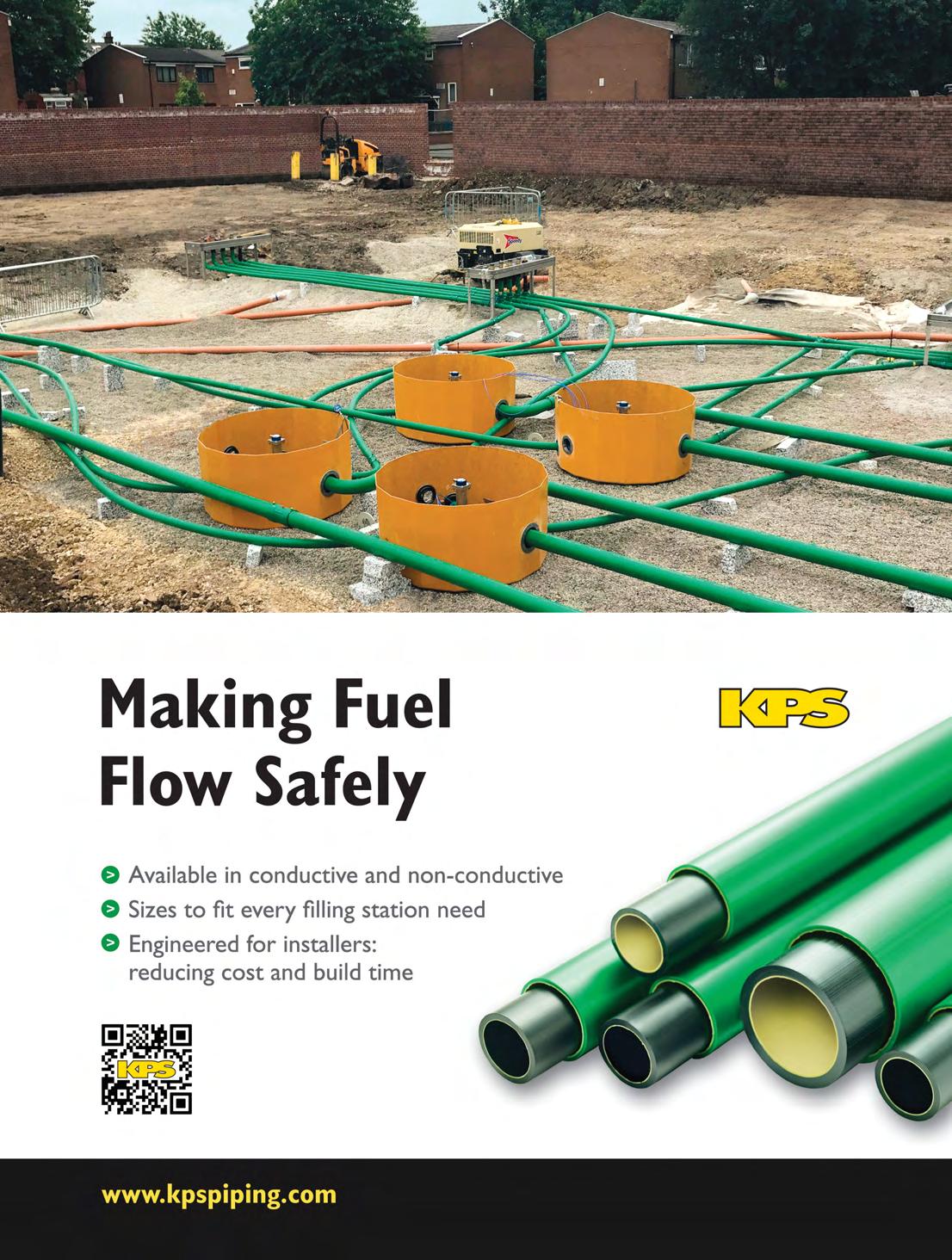
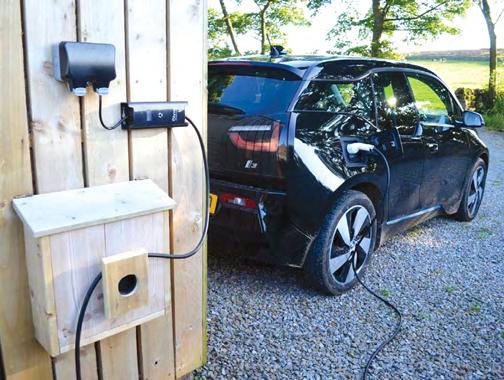

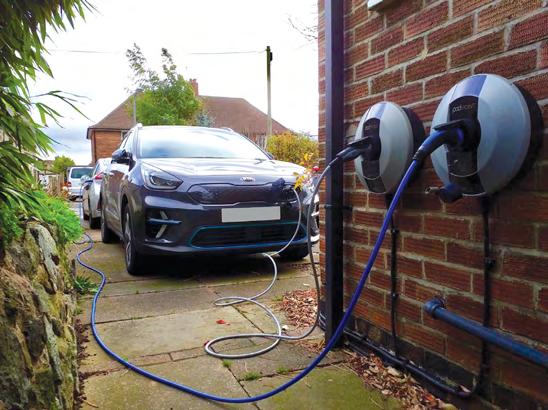
many vehicles are not parked overnight on a domestic driveway, nor at a commercial base. In fact, it is becoming apparent that on average the proportion of vehicles that do not have their own (or for other reasons cannot use their own) driveway for charging is nationally between 50- 60%, and, in some areas, and especially urban areas (where a high number of vehicles are located), as high as 70%.
Globally Norway is often seen as a vanguard in the move to EV vehicles, but even there, after a decade of incentives and despite new EV sales accounting for somewhere in the region of 80% of the total new vehicle sales, the overall mix of the whole car park is still somewhere around 25% EV. Increasingly “lessons” are being realised from their early transition that point to the need for a greater appreciation of the role that non-domestic charging is likely to play. So, what does that mean for demand for publicly accessible charging, and how does this relate to the retail forecourt?
In recent months, the estimates of how many public chargers will be required in the UK has gradually shifted from an earlier suggestion of 300,000 chargers to some figures now in the region of 500,000 chargers. Whatever the true number (and only time will tell what is correct), comparing this to a current 8,300 (approx.) traditional filling stations demonstrates the significant increase in demand for suitable fuelling locations, and hence a shift in land use type.
In late 2023, the UK reached the milestone of 50,000 public charge points. These range across many different types and speeds of charger, and to date, as we have mentioned in previous bulletins, the level of performance ranges markedly from some very well thought through and more reliable networks, to many which are neither thought through nor reliable.
What this means is that to reach 300,000 or 500,000 there is a lot still to be done, and lots more locations are going to be necessary to get close to this number. A lot more locations.
So, what does this demand for more locations look like at a local level?
There are just over 37 million vehicles on the road currently in the UK, serving a total population of around 67 million. Extrapolating these numbers means a supposed need for around 1 public EV charger per 200 persons.
In the context of site acquisition, let’s apply this figure to a regional city we know well, and where we have previously been engaged in site selection and network planning. This particular regional city has a population of 165,000 therefore requires approximately 825 public chargers. If we were to plan charging hubs of 10 charge points, that would mean the need for either around 80 charging hubs of this size, or, to develop fewer but much larger charging hub sites. (By comparison, in the same urban area, there are just 6 filling stations currently, so roughly 12x as many vehicle “fueling” locations as are currently provided).
Our own experience working with clients to identify sites in this city drew up just 7 viable options for consideration for EV charging (and that included some of the existing forecourts). Of these, most were already occupied by other land uses or
16APEA tel: 0345 603 5507 www.apea.org.uk Articles
charging
Driveway


not available for other reasons. Circling back to the aforementioned 2023 panel event, other members of the panel found similar issues of very constrained site supply when searching for suitable EV charging hub sites across the West Midlands (a different region from where our example city is located).
Now, the obvious remedy would be to widen the search area, crossing the green belt and into neighbouring commuter village areas, but of course the more you do so, the greater the population included in your search zone. As the area increases, so too does the underlying population and volume of vehicles. Hence the volume of chargers that are supposedly required increases. We do find more site options of course, but the overall impact on the required ratio of chargers per person (and potentially viable sites) does not alter by too much.
The outcome: Suitable land may well turn out to be scarce.
What are the EV charger supply options?
These broadly fall into a few different categories. There are the so-called destination chargers, which is to say those chargers located at places where you might park for an extended period of time. Examples might be places of work such as offices, or places of leisure or accommodation such as hotels, parks, entertainment venues, and municipal car parks. All of these have seen much early interest and development. The types of chargers provided here were initially shower chargers, but increasingly we are noticing that the speed of chargers being provided is rising, presumably on the back of customer preference (even if the actual performance of the charger speed is not always commensurate with the signage).
The ability to provide charging in these locations is often suggested to be the real future of re-fuelling, but these locations are not without their challenges. In our experience working with business owners in different sectors, one of the first issues is the business taking the time to come up with their strategy and policy on vehicles. (Whilst it may be high on the agendas of sustainability champions or



18APEA tel: 0345 603 5507 www.apea.org.uk Articles
Street chargingCar Park charging
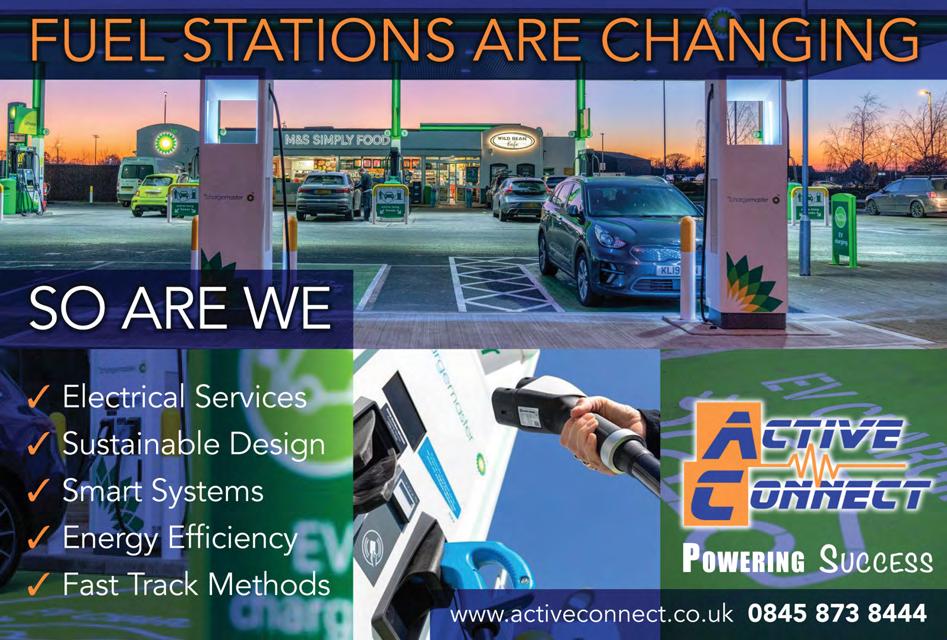
those responsible for fleet, for many companies having an EV policy is not necessarily all that high on their list of business priorities.)
Assuming the business does take a strategic decision to investigate their options for charger provision, the amount of time it takes to deliver charging on their sites can sometimes be resource intensive.
Discussions about how many, where and when to install come into play. This is tied in with the availability of grid connections or upgrades, as well as planning permissions. As others will mention there is also the need for a comprehensive risk assessment to determine location and suitability of those locations (which we very much agree with).
The actual owner of the site will need to be engaged, which brings you into the realm of landlord and tenant, considerations over tenure, legal agreements and building insurance. All of these topics can of course be dealt with (given some effort), but the time to do so should not be underestimated, especially within larger corporates.
“Destination” EV charger provision at these locations may not always be as quick as some have speculated.

19 APEA tel: 0345 603 5507 www.apea.org.uk Articles
Hotel charging
Park n Ride charging

Supermarket charging

Work place charging

Public House charging

Supermarket charging

Work place charging
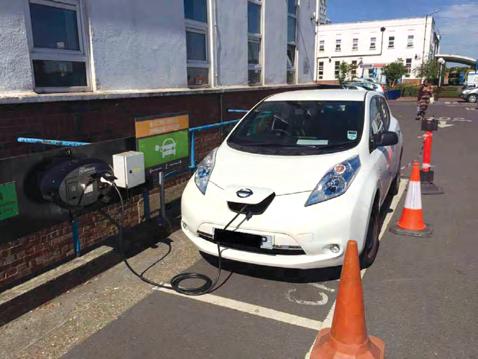
20APEA tel: 0345 603 5507 www.apea.org.uk Articles

To fulfil the wider needs we also have the roadside options, where an en-route and faster re-fueling experience is necessary. We mentioned Norway earlier, and some of the indications from there, even at just 20-25% uptake of the vehicle fleet, is that en-route charging is very much necessary and favoured for a lot of drivers, including those who have home charging available to them.
A convenient offer combining fuel, refreshment and clean toilet facilities is very much desired. At the current time, suitable locations are mainly available from a few main sources which include pubs, restaurants, quick service food and of course traditional fueling stations and motorway service areas.
How does the business model affect this demand and supply equation?
Site operation of EV charging can be provided by either owner occupiers or tenant operators. There are advantages to both models of provision in different circumstances and both have their unique needs. For potential tenants, they will be seeking to take temporary possession of a part of land, preferably where local and convenient amenities are already operated by others, on the basis of minimising their non-related operating costs with a view to driving volume through their service offering. (How long this proposition will last for remains to be seen, as the realisation of the need for non-fuel revenue becomes more apparent.)
For the owner on the other hand, they will want to secure either longevity of tenure/income, or a high shorter-term income, or preferably both if they can be flexible to shift with ever changing
customer spending patterns. In recent years the level of trade at roadside locations has been moving more and more to different uses and revenue streams. In recent months we have heard of nonfuel sales targets of 60-70% plus. Speed of transaction and basket size become ever more important, with “fuel” revenue just part of the success of the wider location.
Summary
The balance between the demand for suitable sites (by EV operators) and the supply of suitable land where EV charging provides the best rate of return presents a fundamental aspect of one of the major challenges or “bumps in the road” discussed at the panel event.
Take a map, look at it and analyse the locations where you would want to install an alternative fuel provision and then check out the options. In many cases (and increasingly so as the early sites are taken up) the preferred locations are often going to be occupied already. The evidence is that this is becoming more and more apparent for all types of alternative fuel provision. If a site is in a good location, chances are the site owner will already be capitalising on it.
Sites are relatively scarce, and if you put yourself in the shoes of the landowner, they will no doubt be influenced by the interest to make the best return on the ownership of that land. This is a situation we are seeing repeated in many examples, which provides an interesting twist on whether charging is an opportunity or threat to the existing site owner/operator.
21 APEA tel: 0345 603 5507 www.apea.org.uk Articles
So how do you win a game of monopoly?
Getting back to the title of this article, if you’ve played the board game before you will no doubt understand the general objectives, and also the strategies and tactics required. The recent panel event provided plenty of food for thought about the opportunities and threats to landowners and businesses in the roadside fuel sector. Suitable land is highly sought after, and supply of the most appropriate sites can be limited.
In future editions of The Bulletin we will seek to share our thoughts on the challenges and which “bumps in the road” apply to other stages of the property life cycle.
Evenlode Roadside provides independent and professional services to operators across the whole property life cycle, including sourcing, selecting, appointing and managing consultants, suppliers, service providers and contractors to develop and maintain successful sites.
For more information please visit www.evenloderoadside.com

Combatting Groundwater Ingress in Underground Fuel Systems: A Technical Overview
By Alex Boudry, General Manager, PFS Fueltec
Introduction
Groundwater ingress into underground chambers and sumps is a prevalent and critical issue in fuel installations, especially at petrol stations. This phenomenon not only threatens environmental safety but also compromises the integrity of fuel systems. The essence of addressing groundwater ingress lies not only in understanding its implications but also in adopting innovative solutions that ensure both environmental protection and the longevity of fuel infrastructure.
Understanding the Problem
Underground chambers and sumps are integral to the fuel systems at petrol stations, designed to house connections, valves, and pipes that facilitate fuel storage and distribution. However, the majority of these structures are vulnerable to leaks, primarily at entry seal positions where fuel pipes and ducts penetrate the sumps. This vulnerability presents a twofold risk: the escape of fuel into the environment and the entry of groundwater into the fuel system.
Implications of Leaking Chambers and Sumps
The ingress of groundwater into sumps is not a benign occurrence; it can lead to several detrimental outcomes:

•Environmental Contamination: If groundwater can infiltrate a sump, the reverse is equally true; fuel can escape into the surrounding environment, leading to contamination.
•Fuel Contamination: Water infiltrating underground manhole chambers can mix with stored fuel, leading to contamination. This contamination is not just a matter of diluted fuel; it becomes a breeding ground for microbial growth. Acetobacters, which thrive in ethanol/water mixtures, produce acetic acid, accelerating the corrosion of tank lid furniture and compromising the system’s integrity.
22APEA tel: 0345 603 5507 www.apea.org.uk Articles
Water IngressRubber boot seal failed
•Hazardous Waste Generation: Groundwater contaminated with fuel due to leakage must be treated as hazardous waste, necessitating complex and costly disposal processes in compliance with environmental regulations.
Regulatory Considerations
The regulatory landscape in the UK, in comparison to the US, reveals a gap in the requirements for petrol station infrastructure integrity. The absence of mandates for integrity testing in the UK points to a critical area for policy development, aiming to elevate the standards of fuel system maintenance and environmental protection.
Stopping the Issue with Good Design
Despite the availability of advanced sealing technologies, the majority of sumps and seals currently in use, or being installed, rely on rubber boots. These materials are prone to degradation and failure, particularly in the presence of fuel vapours/liquids, underscoring the need for a transition to more reliable solutions.

Addressing the problem of groundwater ingress requires a shift from traditional sealing methods to more advanced and reliable technologies such as Electrofusion and Bonded Entry-Seal Technology. Utilising this technology can significantly reduce the likelihood of leaks. These technologies offer a more robust and durable seal compared to traditional methods, effectively preventing groundwater ingress and fuel egress.
Innovative Repair Technologies
Addressing groundwater ingress into underground fuel systems necessitates not only a comprehensive understanding of the issue but also the implementation of advanced repair and sealing technologies. PFS Fueltec has introduced a range of cutting-edge products specifically designed to tackle water ingress at fuel installations effectively. These products represent a leap forward in both the methodology and materials used for repairs, ensuring longevity, environmental safety, and operational efficiency.

23 APEA tel: 0345 603 5507 www.apea.org.uk Articles
Tank chamber with Electrofusion entry seal technology

Icon FastFoam: A Quick-Fix Solution to enable longer-term repairs
Icon FastFoam is a revolutionary two-part urethane expanding foam that activates instantly. It can be injected from the inside towards the outside of sumps at the point of water ingress, creating a temporary seal within seconds. This rapid action allows for more permanent repair and treatment of active water leaks without the need for large pumps to lower the surrounding water table—a process that not only is cumbersome but also incurs significant costs. FastFoam represents a practical, costeffective solution to immediately address leaks, facilitating a smoother transition to long-term repair measures.

Icon SplitRepair: Innovative Entry Boot Repair Fittings
The Icon SplitRepair system introduces a range of repair entry seals designed to replace existing fittings that have failed due to age, degradation, or damage. These innovative fittings can be installed without disconnecting pipes, breaking concrete, or replacing the sump container, offering a hassle-free alternative to traditional repair methods. Benefits of the SplitRepair system include:
•No need for pipe disconnection or excavation
•Accommodation for angled pipe entry
•Compatibility with all fuel types, exceeding industry standards
•Lifetime Warranty
Icon FastFix: Versatile and Efficient Sump Wall Repair Patch

The Icon FastFix system offers a UV-cured fiberglass repair patch suitable for a variety of surfaces including concrete, steel, fiberglass, and polyethylene. It shines in aggressive environments like aboveground and underground fuel storage systems, curing in as little as 15 minutes under natural light or with a UV flashlight. This peel-and-stick application can withstand pressures over 2,200 psi once fully cured, making it an all-fuels and all-blends compatible solution for structural and protective repairs.
PolyFuse: Advanced Structural Bonder for Polyethylene
PolyFuse is a two-part, acrylic-based structural bonder designed for the repair of minor damages in petroleum containment sumps and chambers made of “low energy” Polyethylene plastic. With the right surface preparation and application, PolyFuse offers a permanent fix to leakage issues, sidestepping the immediate need for costly sump replacement. Compatible with all fuel types and blends, it exemplifies the industry’s move towards versatile, durable repair solutions.
iBond: Multi-Purpose Structural Bonder
iBond stands out as a two-part, fast-curing, multipurpose structural bonder for repairing chambers and sumps made of fiberglass, concrete, and steel. It ensures that, with proper application and surface preparation, the repairs are permanent, thereby avoiding the expense and hassle of sump replacement. Having passed 3rd Party Testing for compatibility with all fuel types and blends, iBond underscores the industry’s commitment to reliable, long-lasting repair solutions.
Conclusion
The challenge of groundwater ingress into underground fuel systems is a complex issue that encompasses environmental, technical, and regulatory dimensions. The introduction of advanced repair technologies by PFS Fueltec represents a significant leap forward in addressing these challenges. By combining innovative sealing technologies with these new repair solutions, the fuel industry is better equipped to mitigate the risks associated with groundwater ingress efficiently and effectively. These efforts are crucial not only for safeguarding environmental and public health but also for enhancing the operational reliability and sustainability of fuel infrastructure.
For guidance on dealing with leaking chambers and sumps, contact Alex Boudry at PFS Fueltec Ltd. alex.boudry@pfsfueltec.com or on 01376 535260.
24 Articles
APEA tel: 0345 603 5507 www.apea.org.uk
ICON split repair fitting




25 APEA tel: 0345 603 5507 www.apea.org.uk
Future Fleets: Are You Keeping Up with The Trends?
By Lise-Lotte Nordholm, VP & GM Clean Energy and Global Platforms at Dover Fueling Solutions
With CO2 emissions increasing every year since 2014 (with the exception of 2020), decarbonising heavy-duty transport is going to be key to accelerating the road to net zero.
Fortunately, the green fleet transport revolution continues apace. With a steady increase in year-on-year demand, it’s fair to say heavy-duty transport has superseded the passenger car in terms of cleaner fuel adoption.
What more can we glean from this? Well, the technology industry tops the charts as the sector with Europe’s ‘most sustainable’ fleets. But how do other industries compare?
Dover Fueling Solutions® (DFS) examines the data to help fleet managers establish whether they’re keeping up with the competition and shares what you can do to help future-proof your transportation.
So, how futuristic is your fleet?
The Sustainability Standings
Spanning 22 European countries, the fleet sustainability rankings determined the industries with the lowest overall CO2 emissions. The results were as follows:
1.Technology
2.Financial Services
3.Energy & Chemicals
4.Industrial
5.Automotive
6.Consumer Goods
7.Construction
8.Healthcare & Pharma
With the lowest overall average CO2 emissions combined with the second highest Battery Electric Vehicle (BEV) share, the technology industry blazes a trail for sustainable fleets and sets a shining example to other sectors.
Thankfully, prevailing trends are positive, with the number of alternatively fuelled vans, trucks and buses growing steadily. Vans make up the majority of this, with an upswing in trucks and buses too.
The Most Carbon Neutral Countries
It’s also useful to drill down into the data to determine the countries with the most clean-fuelled trucks on the road.
Despite being the European leader in terms of EV passenger car
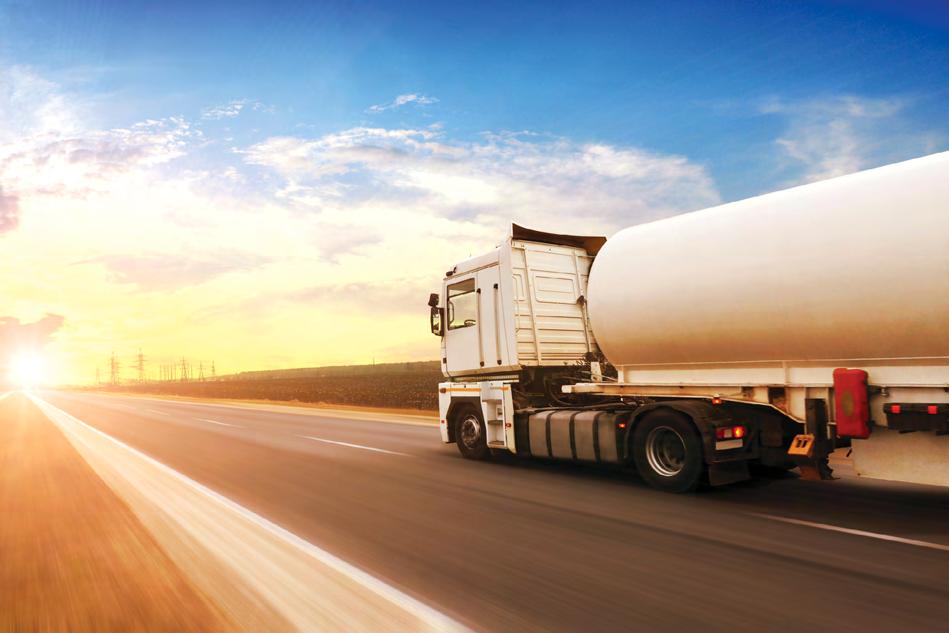
26APEA tel: 0345 603 5507 www.apea.org.uk Articles

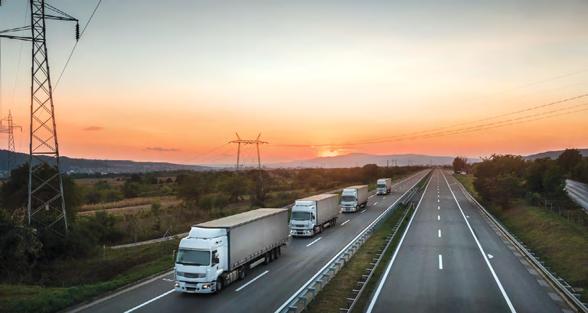
adoption, Germany ranks fourth in terms of commercial vehicles powered by all alternative fuels including Hydrogen, LNG and CNG. The countries with the most alternatively fuelled light commercial vehicles in Europe:
1.Poland – 165,014 units
2.Italy – 160,291 units
3.France – 90,929 units
4.Germany – 67,276 units
5.Netherlands – 34,349 units
In terms of heavy goods vehicles (HGVs), adoption remains slower with the sector still heavily reliant on diesel fuel. Switzerland leads the way with 77 electric-powered trucks, followed by Norway with 56 and Sweden with 47. In fourth and fifth place were the Netherlands and Germany, with 42 and 37, respectively.
In comparison, over 45,000 hydrogen-powered trucks are expected on European roads by 2030. Its simple dispensation method is similar to Compressed Natural Gas (CNG) and will soon be able to deliver around 10kg of hydrogen per minute. This may be a better choice for HGV drivers on long-haul drives.
Liquefied Natural Gas (LNG) is another viable option and is quickly becoming one of the preferred clean fuels on the European market. A reported 8,608 LNG-powered trucks are already on EU roads with 1,202 registered in 2022 alone.
Alternative Fuelling by Organisation
It’s fair to say that clean-fuelled fleets have grown significantly in the B2C sector too. This has been underpinned by delivery companies such as Amazon, FedEx and DHL alongside retail brands like IKEA and Best Buy, who are also committing to EV.
For example, as part of its climate pledge, Amazon plans to purchase 100,000 electric vans by 2030, with 50% of shipments said to be in line with net-zero principles. DHL meanwhile intends to operate 70% of its first and last-mile delivery services with clean transport modes by 2025.
Alternative fuelling by organisations would appear to span EV, natural gas (LNG and CNG), and hydrogen, proving there’s no one-size-fits-all fix for every business.
FedEx, for instance, has pledged to have an all-electric fleet by 2030, demonstrating that EV is an ideal choice of vehicle for local courier deliveries. German supermarket chain EDEKA, meanwhile, is set to convert its 700-strong vehicle fleet to LNG. In addition to this, an estimated 17% of new trucks will run off hydrogen across the EU by 2030.
What infrastructure is needed for business fleets to make the transition to clean fuels?
Businesses transitioning to clean fuels require a robust infrastructure to support adoption. Lise-Lotte Nordholm, VP & GM Clean Energy and Global Platforms at DFS
advises: “First and foremost, a comprehensive charging or refuelling network is vital for electric and hydrogen-powered vehicles. Establishing charging stations in strategic locations, including workplaces, commercial hubs and along major transportation routes, ensures convenience for all fleet vehicles.
“For electric fleets, investing in a scalable charging infrastructure with various charging levels, including fast-charging stations, is essential. Businesses can collaborate with local governments and energy providers to develop a cohesive network that caters to the diverse needs of their fleets.
“Additionally, smart charging solutions, incorporating renewable energy sources, can optimise energy use and reduce the overall carbon footprint of the charging process.
“In the case of hydrogen-powered vehicles, developing a hydrogen refuelling infrastructure is critical. This involves establishing hydrogen refuelling stations strategically, particularly in countries and regions with high fleet activity.
“Collaborative efforts with energy companies and government incentives can expedite the deployment of these stations, ensuring a seamless transition for businesses embracing hydrogen fuel cell technology.”
How can your fleet make the transition? Whether you’re looking to switch to hydrogen, EV, CNG, LNG or another alternative fuelling option, there are some important things to bear in mind. Lise-Lotte continued:
“Assess your fleet: Take the time to analyse your fleet. Understand the type of vehicles you have, your average fuel consumption and their general purpose. This may help you identify areas where alternative fuels could be adopted.
“Decide on your alternative fuel: As referenced, there are a number of alternative fuels available, including electricity, hydrogen, LNG, and more. Evaluate which is most appropriate to your specific needs based on factors such as cost, range and fuelling infrastructure.
“Financial incentives: Be sure to cash in on any financial incentives. These may include grants or tax credits governments offer to encourage alternative fuel adoption. This can help offset any initial costs.
“Stakeholder engagement: Make sure to engage with your employees, clients and suppliers to communicate the benefits of your alternatively fuelled fleet. This can help publicise your sustainability efforts and potentially attract environmentally conscious customers.”
28APEA tel: 0345 603 5507 www.apea.org.uk Articles
Rapid Change Ahead For Mobility –Are We All Ready?
By James G Carton - Assistant Professor in Energy Sustainability & Hydrogen, Dublin City University
Earlier this year I was invited as keynote speaker to the UK & Ireland’s Institute of Automotive Engineer Assessors (IAEA) IAEA 90th Anniversary event (https://www.iaea-online.org/news/2023/05/iaea-90thanniversary-event-a-triumph).
The IAEA represents and meets the needs of the automotive engineer assessors who work closely with the auto industry and insurance companies as well as mechanics to manage vehicle accident assessment all across the UK and Ireland.
The topic of my speech was “The Future of Mobility” to present a view of how the auto industry and mobility may develop over the next three decades. My audience was mixed; many vehicle assessors, but also representatives from vehicle manufacturers, fuel suppliers, parts manufacturers and resellers, insurance companies, fire departments, police, mechanics, etc.
I opened the talk with a confession, that I am a battery electric vehicle owner who is an energy system expert in hydrogen technology. With a follow up statement that if you drive a vehicle in the future it will probably be electric.
I proceeded to explain the future demise of diesel, then petrol fuels, followed by hybrid and finally biofuels over the next 30 years from the passenger car fleet as well as high taxes on big heavy passenger cars. Many in the room were shocked. I did however give the classic vehicle enthusiasts a reprieve when I mentioned some ICE vehicles would be allowed to use sustainable biofuel to allow historic ICEs to endure in the future or else be converted to electric.
The challenges are evident for the mobility sector: Fossil fuels are getting more insecure & expensive, retail & customer priorities are changing; the second hand passenger vehicle market is in flux; safety is always paramount, while training for technicians & first responders on new vehicle technology, from batteries to motors, to hydrogen tanks & fuel cells is only beginning; and my representative audience are at the forefront.
What interested many of the audience was how will they manage this rapid change in the industry, that they even see today; effectively seeing the enduring Internal Combustion Engine (the ICE) be redundant in a matter of years, replaced by efficient electric motors running on renewable electricity delivered from energy storage devices, mostly batteries, and some hydrogen tanks.
The final point the audience took was that the growth of the sales of vehicles today will not, cannot and should not be sustained into the future; new cars will be sold and second hand vehicles will have

29 APEA tel: 0345 603 5507 www.apea.org.uk Articles
a market but the share of vehicles per population of people should be low, similar to 1990 levels of 25% of population rather than a massive 50% of population in Ireland in 2020. Where will all the cars go or how might people get around, one asks? Quite simply we should and will use better modes of transport other than a passenger car (which usually has a single occupant). People don’t want to swap a diesel vehicle for an electric one and still be stuck in traffic; mobility should be an enabler not an arduous journey. Walking, cycling, scootering, bus, tram, train, etc, these modes of transport should get us to our destination faster, cheaper and safer than millions of cars.
The opportunities for people and the companies supporting
vehicles today can exist in the future. Vehicles, whether fossil fuel or battery or hydrogen, will need maintenance and repair, accidents and insurance will exist, as well as the needs for first responders; roads will exist, just not many more new roads than from today.
But lots more buses and more frequent trains will exist, as well as safe, segregated connected cycling infrastructure will be in every town and city.
People must choose better themselves and if the correct infrastructure is there people will swap an expensive polluting vehicle on a congested long commute for a cheap, easy, efficient ticket.
Not all Tank Lining Systems are the Same…
By Simon White, Business Development Manger, FASS UK
Tanks and Pipeworks is a leading company specialising in tank lining, petrol filling station solutions, tank cleaning and much more. With years of experience and a dedicated team of professionals Tanks and Pipeworks has established itself as a trusted provider of lining systems in the industry.
The most notable service offered by Tanks & Pipeworks is the EN approved, UK patented Tri-Line tank lining system. We understand the importance of maintaining the integrity of storage tanks, whether it’s for fuels, chemicals, water, or other substances. Our expert team utilises advanced techniques and high-quality materials to ensure tanks are properly inspected, prepared, lined, and monitored to protect against corrosion, leaks, and other potential hazards.
By providing reliable tank lining solutions, Tanks and Pipeworks helps businesses maintain the compliance, safety and efficiency of their operations.
Tanks and Pipeworks has recently revisited a retail petrol filling station in Birmingham with an order to Tri-lIne five single skin steel underground fuel tanks.

A single tank on the site had previously had the Tri-Line system installed by Tanks and Pipeworks for the previous owners on the 28th May 2011 and part of the scope of the works was to provide an investigation and report on the condition of the tank lining.
The tank had been monitored for the previous 12 years by a constant vacuum monitoring system and no faults or alarms had been reported in that time.
While preparing the five single skin tanks for lining the lined tank was cleaned and internally inspected and apart from some discolouration of the topcoat resins, shown on the attached photo, the lining was found to be in perfect condition. The tank surface was then lightly abraded, and a new topcoat resin resistant to all modern standard fuels was applied.
As the accompanying before and after photos show, unlike some other tank lining contractors, Tanks and Pipeworks line the entire barrel and dished ends of the tank and not just the tank floor.
When work had been completed on the newly lined tanks the previously lined and now refurbished tank was
30APEA tel: 0345 603 5507 www.apea.org.uk Articles



31 APEA tel: 0345 603 5507 www.apea.org.uk Articles
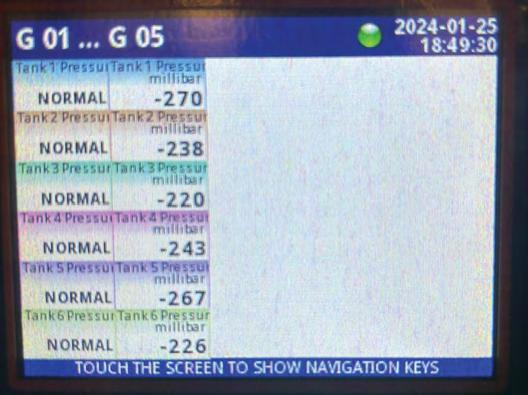
connected with them to the new digital monitoring system. This allows for a constant monitoring system to be connected to the site’s automatic tank gauge, and then to remote monitoring stations, to provide instant warning of vacuum loss and also a downloadable data log of vacuum readings recorded every 60 seconds for each tank.
The data log has proved invaluable in demonstrating to customers when tank alarms have been investigated that third party interference with, or damage to, the monitoring system is the overwhelming cause of alarms with the TriLine system and with over 700 tank lining systems installed only two tanks have required warranty visits to rectify issues within the tank lining systems themselves.
This case indicates why Tanks and Pipeworks remains the leading installer of lining systems in the UK and why we are delighted to offer an inspection and refurbishment service and to extend for another 10-years the warranty on our lining systems. Not all lining systems are the same.
Independent Connection Providers (ICP) Explained
By Cheryl Ashton, Marketing Coordinator, TSG Solutions
An Independent Connection Provider (ICP) operates under NERS accreditation, governed by the National Electricity Registration Scheme. UCPC, TSG’s ICP services company, adheres to the highest industry standards and brings years of experience and expertise to every project.
An Independent Connection Provider (ICP) is a certified company that executes high voltage (HV) and low voltage (LV) electricity connection works on behalf of its clients and in conjunction with the distribution network operators (DNOs). All ICP companies must be accredited by the National Electricity Registration Scheme (NERS) which certifies them to work on the DNO electricity network and confirms their ability to complete undertakings professionally and safely.
National Electricity Registration Scheme (NERS)
NERS is recognised in the UK by all Distribution Network Operators (DNOs) and was founded as part of an initiative that aims to standardise and regulate electrical distribution in the UK. NERS sets specific requirements, scopes and responsibilities to which ICPs must commit and adhere to. Its goal is to assess the technical proficiency of electrical providers to design, project manage and successfully implement electrical connections.
ICPs can only operate in accordance to the extent that their accreditation specifies. They cannot undertake work beyond their confirmed NERS certification, providing total confidence to clients that their needs will be catered for.
NERS was originally established to encourage competition and maintain high-quality service in the UK’s electrical industry. Over time, NERS modified its structure to adapt to changing market
dynamics and technological progress. Each revision intended to align the industry with global best practices and local operational needs, cultivating a competitive, skilled and quality-driven environment.
Individuals working for an ICP will be issued with a NERS passport to authenticate their identification and provide a general record of their training, competence, inductions, reviews, audits and work histories.
Lloyds Register Quality Assurance (LRQA)
NERS is administered by Lloyds Register Quality Assurance (LRQA) Limited, an independent business of the Lloyds Register, on behalf of the UK’s Distribution Network Operators (DNOs).
NERS assigned the entire accreditation process to LRQA, which has strengthened the procedure’s credibility and acceptance within the industry. A full list of NERS-accredited contractors is available to all on the LRQA website; depending on the scope of their accreditation, ICPs can carry out work such as designing new network connections, substation installation, civil works, cable laying and installing electrical switches and transformers (with voltage limits where applicable).
The introduction of accreditation enabled ICPs to compete in the contestable connections market, attracting more proficient ICPs to the industry.
Contestable and non-contestable connections
There are two categories of work when providing new electrical utility connections: “contestable works” and “non-contestable works.”
32APEA tel: 0345 603 5507 www.apea.org.uk Articles


Contestable works are not monopolised by the host network and may be undertaken by an accredited Independent Connections Provider (ICP) or an Independent Distribution Network Operator (IDNO). Contestable works may include the installation of cables, substations and other plant associated with the new connection. The Office of Gas and Electricity Markets (OFGEM) encourages competition in areas where it can make a positive difference for customers connecting to the network, fairer prices and better service.
Non-contestable work can only be undertaken by the host Distribution Network Operator (DNO). Certain types of reinforcement works could affect the operation of DNO networks, and due to the sensitivity and potential impact, the DNO will only complete these works themselves. These works include but are not limited to: repairs and maintenance, high voltage operations, removing disconnected low voltage mains, high voltage and extra high voltage overhead conductors and poles, removing disconnected substations, and connection of contestable works to the distribution system at both high and extra high voltage.
When to use an ICP
Any UK business that requires a new connection to the electricity grid can use an ICP for part of the work. For example, a business wishing to install electric vehicle chargers on the premises will need additional electrical power to support the venture. Companies selecting an ICP to complete the contestable works and deliver a grid connection can expect greater flexibility, cost efficiency and a wider choice of providers.
33 APEA tel: 0345 603 5507 www.apea.org.uk Articles
ICP Works Underground Cabling

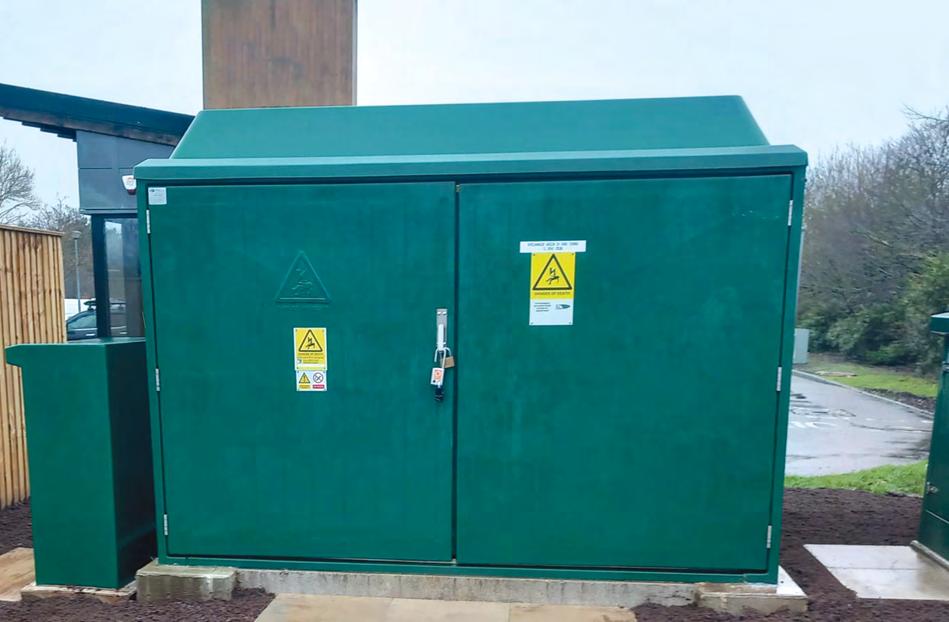
34APEA tel: 0345 603 5507 www.apea.org.uk Articles
ICP Sub Station
ICP Switchgear Unit


Working timelines will vary depending on the ICP chosen, the service requested, the size and location of the grid connection and the measurement of voltage (low or high). Any grid connection will involve the DNO for the non-contestable works; however, if an ICP conducts the contestable works, which can sometimes be a large proportion of a project, grid connections are generally delivered faster than via local DNOs.
Please note: The time to deliver the connection will often depend on the size of the connection required and the complexity of the work involved. Large connections may take many months to complete, so it is important to stake a claim on the additional power required at the site, even if installing the charge points is not a priority. Otherwise, due to the growing electricity demand across the UK, companies risk there being no power availability when the decision to install chargers is made. Every region is different, so it is worth
35 APEA tel: 0345 603 5507 www.apea.org.uk Articles
TSG Solar Technician
exploring the local restrictions and time scales with the DNO. There will be a time constraint placed on the connection to the grid, where the additional power will be revoked if not utilised. This imposed deadline will vary depending on the location and once again, the local DNO will be able to provide more information.
Independent Distribution Network Operators (iDNOs) iDNOs operate and manage electricity distribution networks independently of the major utility companies. They provide services such as connecting new properties to the national grid, maintaining and upgrading local distribution infrastructure, and ensuring the reliable delivery of electricity to end-users. These independent operators play a role in introducing competition into the electricity distribution sector, potentially offering consumers more choices and fostering innovation in the industry. An iDNO also has the ability to offer an “asset value”, which is an upfront sum of money that will be payable upon energisation of supply and will vary in value depending on if it is metered at LV or HV, but can make the cost of a new connection very appealing.
Connection considerations
In some instances, it might be more economical for companies to request a brand-new connection to the grid, rather than increasing an existing connection. The new connection would link to another part of the site and is particularly suitable for large sites or depots.
It may also be worth businesses considering a time-profiled or flexible connection, which allows the power to be drawn in varied amounts from the electricity network at different times of the day or night – depending on operational requirements.
To explore both of the above options, companies should contact the local network operator.
TSG is here to help UCPC (a TSG company) is committed to providing an efficient firstclass ICP service to all of its clients, by delivering trouble-free seamless connections to the grid.
Crucial to the success of any energy network project is the design process. UCPC’s qualified designers are involved from the onset, as early participation will help identify potential problems before they arise. The designers are also very familiar with all of the latest standards and requirements, guaranteeing that the new connection is both compliant and successful.
Project managers (PMs) are assigned to the job to ensure that the connection stays on track and within budget, meeting all of the client’s expectations. They manage the entire connection process, coordinating with energy suppliers, DNOs, local authorities and other stakeholders. PMs also handle all necessary paperwork, ensuring compliance with regulations and industry standards. Effective project management ensures timely and effective connection delivery.
TSG has the expertise to complete all civil works, lay cables and install the electric charge points. Before a connection is energised and handed over to the energy supplier, TSG conducts rigorous testing and commissioning procedures to verify the integrity and performance of the infrastructure, in line with all relevant safety standards and regulations.
Hydrogen: Why Your Investment isn’t Up in the Air
By Dover Fueling Solutions
It’s clear that hydrogen remains a central pillar on the road to net zero with the fuel source predicted to make up 22% of final energy demand globally by 2050.
Hydrogen is particularly effective in parts of the economy difficult to decarbonise such as long-haul transport with its natural abundance and easy nozzle-to-pump filling dispensation.
With the global fuel cell electric vehicle market expected to be worth 428.7 billion by 2032, forecourt owners are wise to invest in dedicated hydrogen pumps to help future-proof their businesses.
However, the investment also demonstrates a significant financial contribution. Experts, Dover Fueling Solutions explain why this is a sound decision which will pay off in the long run.

36APEA tel: 0345 603 5507 www.apea.org.uk Articles

How is hydrogen distributed and at what cost?
The distribution of hydrogen is via three main channels: pipelines, high-pressure tube trailers and liquefied hydrogen tankers.
At present, pipes typically remain the least expensive way to deliver large volumes of hydrogen, with 4,300km of pipeline currently in place across the continent and 23,365km predicted by 2030.
Another option is tube trailers which transport compressed hydrogen gas by truck, rail or sea. This is typically an expensive method and is used for shorter distances of 200 miles or less.
Liquefied hydrogen tankers are another method used to cool hydrogen to temperatures where it becomes a liquid. This is also typically expensive but can be transported more efficiently and over longer distances too.
In addition to these different logistic methods, the dispensing mechanism is more complicated too, due to the various temperatures hydrogen needs to be stored and dispensed at.
As a gas, hydrogen requires storage in high-pressure tanks of around 350-700 bar or 5000 – 10,000 psi. Liquid storage, meanwhile, requires cryogenic temperatures of -252.8 degrees. Both of these can be costly procedures with an estimated $10 per kWh of stored hydrogen capacity.
You may be wondering whether all of this is worth it, especially
with the challenges surrounding distribution, storage and converting hydrogen.
So, is all of this expense worth it?
Clearly then, championing hydrogen fuel pumps demonstrates a significant investment for forecourts but that isn’t to say it doesn’t make shrewd business sense, particularly given hydrogen’s stratospheric potential.
The International Energy Agency notes that the move towards hydrogen is enjoying “unprecedented momentum” around the world as it finally presents itself as a longstanding clean energy solution.
In Europe, the ‘Basque Hydrogen Corridor’ has seen 200 million investments alone in various projects with the market expected to swell to $428 billion globally by 2032.
Of course, to facilitate all of this demand and growth, the sector will need a fully scaled infrastructure which caters to the needs of drivers, be they commercial or consumer. To accommodate, hydrogen refuelling stations are expected to grow by 17% with North America leading the growth.
The hope is that as hydrogen becomes more widely adopted, the cost of hydrogen adoption will fall dramatically. This will be in part due to technological improvements across the sector including renewable energy generation and declining costs of hydrogen
37 APEA tel: 0345 603 5507 www.apea.org.uk Articles
electrolysis. Forecasters predict that the costs of hydrogen production could decline as much as 50% by 2023 and 70% by 2050.
In fact, stock market analysts Motley Fool believe that hydrogen is one of the best alternative fuel investments to make right now.
Given its potential to decarbonise heavy industry, the fuel is likely
to see an abundance of private investment which should improve infrastructure across the continent. The website estimates that it could well become a multi-trillion industry of the future.
Conclusion
While the initial financial outlay may be daunting for some station owners, the hydrogen market demonstrates enough growth to merit the investment.
Reduce, Reuse, Recycle: Mike Colohan on Decommissioned Tanks and Residual Fuels
By Steve Gain, Managing Director, OTS Group

We sat down with Mike Colohan to discuss OTS Group’s innovative approach to handling decommissioned tanks and residual fuels.
[Nadine Cameron] Mike, tank decommissioning is a challenge for many in the industry. Can you share what OTS Group does differently with decommissioned tanks and residual fuel?
[Mike Colohan] Absolutely. At OTS, we recognise the need for a service that not only safely decommissions tanks but also disposes of the tanks and recovers and repurposes residual fuels. We operate a waste licensed environmental facility in the Cotswolds which enables us to process decommissioned tanks and residual fuels, and with our new HVAC tanker arriving in March, we’re set to increase our capacity for fuel uplift and disposal jobs significantly.
[NC] That sounds like a comprehensive approach. Can you elaborate on the fuel uplift service?
[MC] Sure. The essence of our fuel uplift service is quality and environmental stewardship. We don’t just remove the fuel and put it back into new or refurbished tanks; we polish and test it until it meets our stringent quality standards. Our onsite fuel storage facilities allow us to refine the fuel to its highest quality, which is a part of our broader

38APEA tel: 0345 603 5507 www.apea.org.uk Articles

commitment to sustainable decommissioning solutions. Moreover, we’re compliant with the RDCO scheme, enabling us to buy back fuel and offer commercial value to our clients through our ‘We Buy Any Fuel’ scheme.
[NC] Moving beyond fuel, how does OTS handle the physical tanks once they’re decommissioned?
[MC] Transporting decommissioned tanks safely is a priority for us. For tanks up to 140K Litres, our trained team can transport them without issue once they’ve been gas-free certified by our trained engineers. Larger tanks require onsite cutting to facilitate transport – this is a service we also offer, always adhering to our strict safety protocols. We also operate a ‘We Buy Any Tank’ scheme, reflecting our belief in the full lifecycle value of these tanks. Whether they’re reconditioned for reuse or recycled for scrap, we ensure they continue to offer value.
[NC] That’s an interesting approach. How does this benefit your clients directly?
[MC] In several ways. First, through the environmental responsibility we uphold in handling the decommissioning process. Secondly, through the commercial value we offer, including a rebate for decommissioned tanks, currently valued at £100 per tonne providing the processability is cost effective. It’s our way of thanking our clients for making sustainable choices and acknowledging that decommissioned tanks still hold value. Thirdly, wherever possible we look to reduce the impact on the
environment by processing fuels that might otherwise be considered ‘waste’ at our Environmental Facility. By recovering fuels through filtration and polishing, we can potentially add commercial value for our clients in the form of a credit. Often, our clients may not have a further use for the product themselves. In such cases, leveraging our network, we aim to offer the laboratorycertified processed fuel to the market as a replenished product.
[NC] It’s clear OTS Group is pioneering sustainable solutions in tank decommissioning. Any final thoughts on the impact of these initiatives?
[MC] Our goal is to redefine the lifecycle of industrial tanks. By turning potential waste problems into opportunities for recovery and reuse, we’re not only mitigating environmental impact but also setting a benchmark for the industry. It’s about showing that sustainable choices are not only possible but beneficial for everyone involved.
[NC] Thank you for sharing these insights, Mike. OTS Group’s work shows the positive impact that innovative thinking and commitment to sustainability can have in the industrial sector.
Mike Colohan’s perspectives shed light on the importance of sustainable practices in the decommissioning of tanks, emphasising not just the environmental benefits but also the added value for clients. OTS Group’s approach serves as a model for the industry, demonstrating how responsible environmental stewardship and commercial viability can go hand in hand.
39 APEA tel: 0345 603 5507 www.apea.org.uk Articles
The 3 Reasons Businesses Should ALWAYS Prioritise Safety When Decommissioning Fuel and Leachate Tanks
By Steve Gain, Managing Director, OTS Group
Decommissioning fuel and leachate tanks demands a safety-first approach; it’s not merely about compliance or avoiding accidents, it’s about protecting the core aspects of your business and its most valuable assets. The potential for accidents, coupled with the legal and ethical implications, underscores why choosing a reputable and experienced decommissioning service like OTS Group is not just preferable but essential. Here, we explore some examples of safety negligence related to tank decommissioning and disposal, and three compelling reasons why businesses must never compromise on safety during the decommissioning process.
Regulatory Compliance
Companies are bound by stringent legal obligations and regulations designed to ensure safety and environmental protection. These regulations mandate comprehensive safety measures, risk assessments, and the implementation of best practices to prevent accidents and mitigate hazards. Failure to comply with these standards can result in hefty fines, legal penalties, and significant reputational damage. OTS Group’s safety-first approach guaranties adherence to safety protocols, safeguarding workers, the environment, and the organisations that we work with.
Case Studies: The High Cost of Safety Negligence
While it might be tempting to plump for the lowest quote when choosing a firm to decommission your fuel or leachate tanks, it could in fact be a very costly decision. A stark reminder of the dangers inherent in tank decommissioning comes from past incidents where safety protocols were disregarded, leading to tragic outcomes:
•One such example is the incident on 16th February 2007, involving a waste company fined over £90,000 due to the deaths of three workers in a slurry tank. The company and its two bosses were found to have a “reckless disregard” for employee safety, highlighting the severe consequences of neglecting safety protocols during hazardous operations.

•In 2014, HSE reported a case whereby a company that decommissions fuel tanks committed safety failings leading to an employee being burnt while cutting up a disused fuel tank. The employee was using a disc cutter to help remove fuel tanks from a former filling station. A spark ignited the residual fuel vapour and the worker needed to be in intensive care for two days with burns to his face and wrist. HSE suggest cold cutting techniques should have been used instead of a disc cutter. The owner of the business was fined £4,000 and ordered to pay £1,000 costs.
•In 2016, the two directors of a metal recycling business were jailed for 9 months for failing to discharge the duty to which they were subject by virtue of section 2(1) and 3(1) of the Health and Safety at Work etc Act 1974 after a wall collapsed killing five agency workers. In addition, both firms operating from the yard had to pay combined fines of £1.6million plus prosecution fees.
•In December 2023, Tasca Tankers of West Yorkshire pleaded guilty to breaching Section 2(1) of the Health & Safety at Work etc Act 1974 after a worker collapsed from gas exposure in a metal tank before the same fate befell a colleague who went to check on him. The company was fined £200,000 and ordered to pay £7,060 in costs.
It follows that prioritising a safety-first approach to decommissioning is necessary to:
•Protect personnel
•Protect the environment
•Protect your business
40APEA tel: 0345 603 5507 www.apea.org.uk Articles

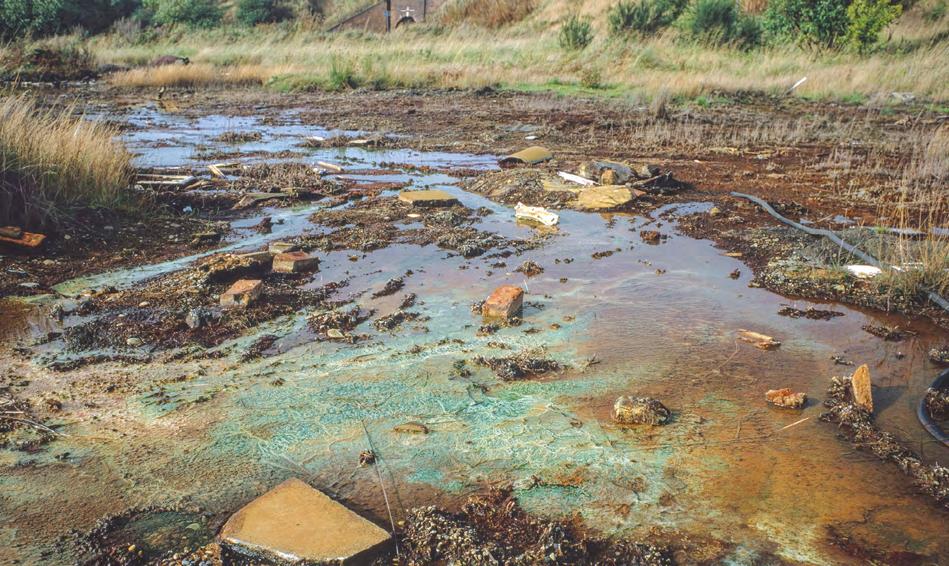
1. Protecting Personnel
The possibility that traces of methane and other hazardous gases may be present in tanks requiring decommissioning poses significant risks, including the potential for explosions. OTS Group always ensures gas-free certification before decommissioning which can prevent dangerous accidents. In addition, both fuel and leachate tanks can contain a mix of harmful chemicals, and without proper ventilation and precautions, the health risks to crew and the environment are substantial. This is why OTS Group has a policy of deploying a three-person minimum confined space entry team to any decommissioning job:
•Confined Space Entrant: Authorised to enter permit spaces, responsibilities include recognising exposure risks, utilising equipment, and maintaining communication with the attendant.
•Confined Space Attendant: Stays outside the permit space, actively monitoring and supporting the entrant’s safety.
•Confined Space Supervisor: Holds ultimate accountability for the entire entry operation, authorising entry and overseeing safety protocols.
Upholding Ethical Standards and Employee Welfare
Beyond legal obligations, companies have a Duty of Care, ensuring that employee safety and health

42APEA tel: 0345 603 5507 www.apea.org.uk Articles
Leachate Site
Tank Cleaning
are paramount in all operations. This advocacy for employee welfare reflects a commitment to the fundamental rights of workers and a culture of care and respect for the individuals who face these risks daily.
2. Protecting the Environment
Improper decommissioning of fuel and leachate tanks can lead to environmental contamination with lasting impacts on ecosystems and public health. A safety-first approach ensures that hazardous materials are handled and disposed of correctly, safeguarding the environment for future generations.
3. Protecting your Business
The damage to others and to the environment that stems from safety negligence can also have an impact on your business. Adopting a safety-first approach to decommissioning means protecting your business from:
•Significant financial repercussions, including cleanup costs, fines, and compensation for damages.
•Legal repercussions including potential civil and criminal charges.
•Reputational damage. Safety negligence can tarnish a company’s image, leading to public scrutiny and loss of trust that can be difficult to recover from.
Best Practices and Solutions: Setting the Safety Standard
To ensure the safe decommissioning of fuel and leachate tanks, companies must adopt rigorous safety protocols, including comprehensive risk assessments, using 3-person minimum confined-space entry teams, and advanced safety equipment.
Key recommendations include:
•Investing in proper training for all personnel involved in decommissioning processes to ensure they are well-versed in identifying and mitigating risks.
•Equipping workers with the latest safety gear and technology.
•The use of effective monitoring systems which can play a pivotal role in early detection of potential hazards.
OTS is proud to promote a culture of safety that undoubtably contributes to our reputation in the management of hazardous waste.
Companies must uphold stringent safety standards, not just to comply with regulations but to protect lives and preserve their reputation. Failure to do so not only risks severe legal and financial repercussions but also endangers lives and can irreparably damage a company’s standing in the industry and its relationship with the community. This is why we recognise the value of safety, not as a regulatory burden, but as a cornerstone of sustainable and ethical operations.
OTS offer turnkey solutions in the disposal of any redundant fuel or leachate storage tanks that are transitioned at our Environmental Facility to ensure waste is handled and disposed of in the correct manner, whilst recycling at any opportunity to reduce the impact on the environment.

43 APEA tel: 0345 603 5507 www.apea.org.uk Articles
MCS Fuel Management Systems –Your Ultimate Solution for Streamlined Operations and Enhanced Savings
By MCS Card Systems

Pushing the Boundaries of innovation
In the dynamic world of fleet management, fuelling efficiency is paramount. Every drop of fuel, every mile driven, and every minute spent on the road impacts the bottom line. That’s why savvy fleet operators are turning to advanced fuel and fluid management solutions such as those offered by MCS Card Systems; solutions that streamline operations, optimise fuel usage, and maximise savings.
With the introduction of the Sapphire 2 system, MCS demonstrates their commitment to pioneering modern solutions that optimise efficiency and drive operational excellence.
Building upon the success of its predecessor, Sapphire 2 embodies cutting-edge technology, offering enhanced features and functionalities tailored to address the evolving challenges faced by fleet operators. By leveraging customer feedback, industry insights, and the latest advancements in technology, MCS continues to push the boundaries of innovation, ensuring that their systems remain at the forefront of the industry, empowering their customers to achieve greater efficiency, cost savings, and sustainability in their operations.
The new Sapphire 2 fuel management terminal brings a host of innovative features designed to enhance functionality, flexibility, and user experience. First and foremost, the terminal boasts a larger enclosure, providing ample space to accommodate its expanded capabilities.
The transition of the MCS Sapphire 2 fuel management system to
the Linux operating system offers enhanced reliability, security, and flexibility. By taking advantage of the open-source nature of Linux, the system benefits from robust stability, reduced vulnerability to malware, and greater compatibility with a variety of hardware configurations. Additionally, Linux’s efficient resource utilisation and streamlined updates ensure optimal performance and longevity for the fuel management system, empowering users with a dependable and future-proof solution.
With the capacity to control up to 8 pumps simultaneously (pedestal mounting options available), the Sapphire 2 terminal empowers fleet operators with greater control and efficiency in fuel management operations. Its versatile power options, capable of running on voltages ranging from 7 to 25 volts DC or 90 to 240 volts AC, facilitate seamless integration into diverse environments, including truck-mounted installations for mobile use.
As with its predecessor, the Sapphire 2 fuel management system offers seamless integration with industry-standard equipment, including pumps and tank gauges, through its versatile communication protocols and compatibility with common interfaces. Its modular design and standardised connectors facilitate effortless connectivity, ensuring smooth interoperability with existing infrastructure without the need for extensive modifications or additional hardware.
A protective cowl now shields the front of the terminal from harsh weather conditions, while a front light ensures visibility during night-time operations. The inclusion of a colour display with day and night modes enhances readability.
44APEA tel: 0345 603 5507 www.apea.org.uk Articles
MCS Core Stock Reconcilliation


Moreover, the terminal will incorporate a sensor to detect the approach of a person or vehicle, waking the terminal from power saving mode and starting security monitoring protocols.
The Sapphire 2 fuel management terminal employs various identification methods to authenticate vehicles and drivers for the fuelling process. This includes RFID (Radio-Frequency Identification) technology, such as individual driver id tags or vehicles equipped with RFID tags which are then automatically recognised upon approach to the fuelling station.
Additionally, PIN (Personal Identification Number) codes may be entered by drivers to confirm their identity manually. Furthermore, the terminal can interface with vehicle telematics systems or integrate with fleet management software to cross-reference vehicle and driver data for verification.
In addition to RFID and PIN code methods, the Sapphire 2 fuel management terminal also utilises Bluetooth technology for seamless vehicle and driver identification. Bluetooth-enabled devices, such as smartphones, can be paired with the terminal to authorise fuelling transactions securely.
Furthermore, the terminal supports fleet fuel cards equipped with magnetic strip technology, allowing drivers to swipe their cards for authentication. These comprehensive identification methods further enhance the flexibility and convenience of the fuelling process, ensuring secure transactions and accurate tracking of fuel usage across the fleet, whilst maintaining accountability and traceability within the system.
A redesigned keypad with larger keys improves user input accuracy and ease of operation. The integration of a DIN rail enables auxiliary mounting for peripherals such as heaters or relays. Finally, simplified serviceability of IO boards, including pumps and controller boards, ensures minimal downtime and efficient maintenance procedures, further enhancing the reliability and longevity of the Sapphire 2 fuel management terminal.
Perfect Synergy: Sapphire 2 and Core
Similar to its predecessors, the Sapphire 2 fuel management terminal seamlessly integrates with newly developed cloud software - Core. Core, with its user-centric design philosophy, prioritises simplicity and ease of use, making it effortless for users to navigate and perform essential functions.
With intuitive interfaces and streamlined workflows, tasks that once required multiple steps can now be accomplished with just a few clicks, enhancing operational efficiency and user productivity.
Whether it’s the real-time monitoring of fuel transactions and stock levels, generating reports, or managing user access, Core empowers users with the tools they need to streamline operations and make informed decisions, all while delivering an exceptional user experience.
MCS Core cloud software integrates with third-party fleet and accounting software through MCS API integration, enabling streamlined data exchange. With live insights into fuel levels, consumption rates, and refuelling activities, you can make informed decisions on the fly.
Through the Core website, users can access a centralised dashboard to view real-time data from MCS Fuel management equipment deployed across various depots or sites nationally or even globally.
The synergy between the Sapphire 2 terminal and Core software, allows fleet operators to unlock new levels of efficiency and effectiveness in fuel management, paving the way for greater success in their operations.
For more information:
MCS Fuel and Fluid Management solutions are distributed globally visit: www.mcscardsystems.com Alternatively contact UK distributors: www.centauronline.co.uk
46APEA tel: 0345 603 5507 www.apea.org.uk Articles
The MCS Sapphire 2 real-time fuelling terminal integrates with the Core website

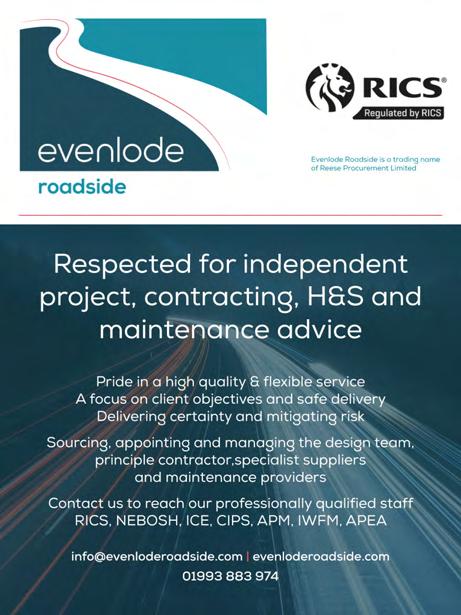
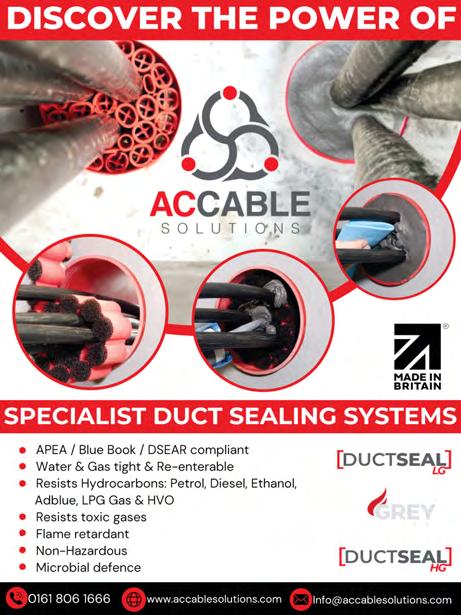

47 APEA tel: 0345 603 5507 www.apea.org.uk
Entering the APEA Awards… 4 Learnings from Over a Decade Behind the Scenes
By Tom Treverton, Event Director APEA Live 2024, Five Senses Media Ltd

For those of you that don’t know me, it’s been my honour to be Event Director of your APEA Live event since 2010. This is an event I love working on for so many reasons. It delivers true business value to its participants via its blend of Exhibition, Conference and Awards elements. In addition, the APEA and downstream forecourt community is packed with wonderfully talented and inspiring people, whom it has been a pleasure to work for.
This is an event that provides a long and varied ‘to do’ list, which spans the full year in-between editions. As with any project, I regard some of these tasks as more important to success than others. Arguably, none more-so than the annual campaign to encourage as many of you as possible to submit entries for the APEA Awards.
To explain why this is true, instead of writing an article today on ‘Top Tips For Submitting A Great Entry’ (BTW, these tips are available for you at www.apealive.co.uk), I thought I’d take a step back and instead offer my thoughts on why entering is so important in the first place, and how – in my view – it should be a ‘no-brainer’, each year.
After 14 years and thousands-and-thousands of conversations with you lovely lot on this very topic, I have a few thoughts! In all honesty, I’d need the whole Bulletin to do this subject justice, but today I’ll stick to 4 headline themes!
Let’s start with the obvious, the strength and value of any industry’s Awards is wholly incumbent on its level of competition, which is solely determined by the quality of its entries. Yours is no different.
The APEA Awards is the glittering climax to every edition of APEA Live. It exists to recognise and reward the best innovations, products and talent within the industry, in any given year. It does this via 8 categories. Just 8… not 28! Our categories are limited to preserve prestige and be truly meaningful. The categories are purposefully designed to be
inclusive, i.e. accessible to the diverse range of businesses and services within the market.
So, for this reason, the importance of annually uncovering the best projects, products and people cannot be understated – as far as our Awards are concerned, it’s everything!
So, beyond all of the incredible benefits your business can derive via entering (more on this below), consider this fact for a moment: if you love being at the APEA Awards to network, host clients, get out with the team, celebrate, be entertained and have fun, then please never lose sight of the fact that the whole occasion is dependent on you and your peers collectively supporting the entry process.

48APEA tel: 0345 603 5507 www.apea.org.uk Articles


Secondly, I’ll pre-empt one of the most commonly expressed barriers-to-entry that I encounter each year, by posting my reply from the get-go: “Trust me, you DO have something you can enter!”
In business, it can often feel like a year flies by. It’s only when you force yourself to stop and reflect that you realise how much you and your team has actually accomplished. I can guarantee you right now: your business and your colleagues HAVE achieved something Awards-worthy this year, and there WILL be a ‘home’ for those achievements within our categories.
I’ve lost count of the amount of times a conversation has started with the gut-reaction, “We’ve nothing to enter this year”, only for a 5 minute conversation to subsequently reveal that they definitely do! Why? Because you are busy people! Stop for a minute… mentally re-run the past 12 months and you’ll realise certain achievements that were pretty awesome.
This brings me to headline number three…entering is SO worth your time!
Believe me, I understand the hesitance! As someone that has entered our own company for multiple event-based Awards, I know that entry creation takes effort, with time you’re convinced you don’t have. Fight this thought, as the upsides are so valuable.
I know for a fact that, each year, hundreds of guests sit at the APEA Awards, watching and clapping the year’s nominees, observing other companies receiving industry-wide attention and thinking,
“We should’ve entered”, “We did something better than that”, “My colleague achieved just as much as they did”. And they will be right!
Don’t let this happen! Take 5 minutes to think about your year’s achievements, then a couple of hours to submit an entry. It’s completely free and, should you become a finalist, you will receive months of free promotion via the event’s marketing campaign, plus huge exposure on the night, before the best of the industry (including your customers).
It’s true, you literally do have to be ‘in it to win it’…but it’s also true to say that you don’t have to win it to benefit! A win is sensational, but being a finalist alone is so worth your time. It’s the best free advertising to the best audience your business will receive.
This provides a fitting segway to headline number 4, and (please forgive my bluntness), hands-down my least favourite barrier-toentry, which I sincerely hope one year I’ll never hear…”There’s no point in entering, the same lot always get shortlisted.”
Firstly, this is statistically untrue; the APEA Awards engage new companies every single year (look it up!).
However, more importantly, it is true to say that certain companies have achieved finalist status on multiple occasions. So why is this?
Because they understand all of the previous headlines mentioned in this article. They understand that every year their business achieves something Awards-worthy. They know that the health of

50APEA tel: 0345 603 5507 www.apea.org.uk Articles

their industry Awards is dependent upon their participation and the participation of their peers (including their competition). They understand that the time it takes to enter is ‘paid back’ one hundred-fold, via the promotion they derive from a shortlisting.
A final point on this headline; if you are tired of seeing your competitors being finalists and your company not, the way to change this is NOT to decide against entering, but to ‘throw your hat in the ring’ as well! To instigate change, there has to be change. Our Awards must represent the best of the industry, but it can only do that if the best in the industry participate.
So, go for it in 2024!
The online entry platform for the APEA Awards 2024 is now open at www.apealive.co.uk. The deadline for entries is Friday 20 September. It is free to ether. You can enter as many categories as you like. You can start an entry, then save-asyou-go (no need to start/complete all at once). Finalists will be announced on Friday 11 October, following the judging period. The APEA Awards forms part of APEA Live on Thursday 14 November at Marshal Arena, Stadium MK.
If you have any questions about entering, please don’t hesitate to get in touch? I’m contactable at Tom@fivesensesmedia.co.uk or 01442 289920.

51 APEA tel: 0345 603 5507 www.apea.org.uk Articles
Pricing for EV Charging Hubs
By Erwin Dingemanse, Director, Bever Innovations

Millions of electric vehicle (EV) drivers will benefit from easier and more reliable public charging thanks to new laws approved coming into force across Europe next year. Regulations will ensure that prices across charge-points are transparent and easy to compare and that a large proportion of new public charge points have contactless payment options.
In simple terms this means that whilst fuel prices on totem poles are a customary sight for customers arriving at a service station, currently drivers have not got a clue how much they will be charged until they plug in. Then there is the problem of charging at peak or off-peak times. The latter is far cheaper, but how do we know when these price variations kick in.
The bottom line, however, is that every EV hub in Europe, be it on a retail fuel station or a dedicated site, will soon have to get to grips with displaying prices. These must be clearly visible to arriving customers wishing to charge their EV vehicles, which for
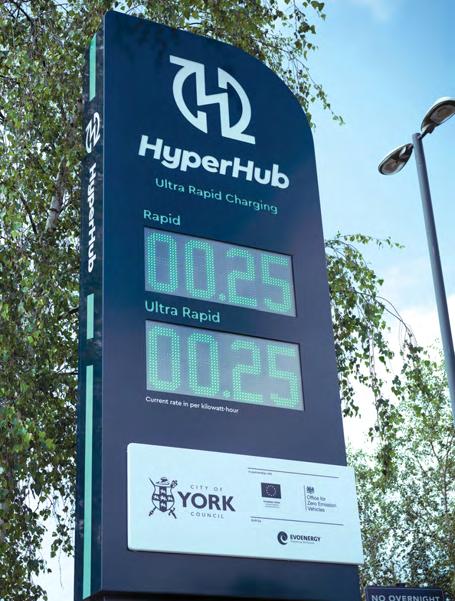
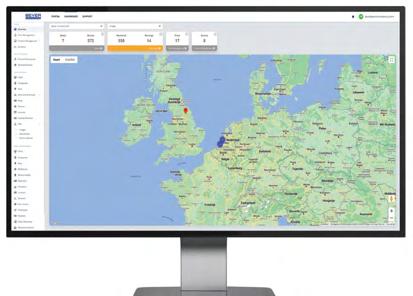
those already having a local POS system in place, will present a challenge.
Connectivity is key on a forecourt when it comes to linking all the elements together like the POS, the forecourt controller, the totem sign, the fuel dispensers and to the back-office system. By having a single solution, everything works in harmony alongside everything else. But it’s not quite as simple as that when EV charging is involved, due to the complexity of the pricing structures which will need to be provided.
The IC Smart is a cutting-edge interface converter that bridges the gap between petrol station POS data and online EV protocol standards. With minimal investment, fuel station owners can now effortlessly display EV kWh price information on their existing or new LED price signs, ensuring that customers have access to transparent and up-to-date pricing for both traditional fuel and electric charging.
For EVO Energy, operating Hyper Hubs in England, it was very important to be able to make remote price changes across all its sites simultaneously, as a local Council has standardised pricing across the region. Howell Griffiths, a Business Development Director with Bever Innovations, commented “We were able to connect all EVO Energy’s sites, and meet the council’s requirements, as well as offering its operators a very simple way to make their sites future ready.”
In France, at a KarrGeen station in Moréac, various LED price displays have been installed, including a specific CNG display. This LED display is remotely managed via a standard POS connection, ensuring accurate CNG price information is displayed. Jean Michel Ludot, Sales Manager for Bever Innovations across France, added, “KarrGreen utilises Bever Smart Technology to establish an online connection to their back-office system, enabling real-time access to EV price information and the calculation of CO2 emission reduction. This data is also displayed on other LED price displays located within the same price sign.”
Rutger van Dierendonck, Technical Director at Bever Innovations, puts things into more detail: “With our EV integration solution, IC Smart, we are making it simple and cost-efficient for fuel stations owners and stand-alone EV Hubs, to embrace the EV revolution
52APEA tel: 0345 603 5507 www.apea.org.uk Articles

whilst providing customers with transparent and accurate pricing information. Asset management is also made much easier for oil companies and major fuel retailers, and we are committed to a sustainable future by seamlessly integrating EV pricing and charger availability.”
Talking about IC Smart to fuel dispensing solutions provider Gilbarco’s head of e-mobility for Europe, James Gale, at the recent EV show in London, said the IC Smart is something which takes on board a very significant aspect of the EV charging market. Gilbarco was exhibiting its advancing eMobility solution, Driivz, its leading end-to-end EV charging system.
For Bever Innovations, software and connectivity is
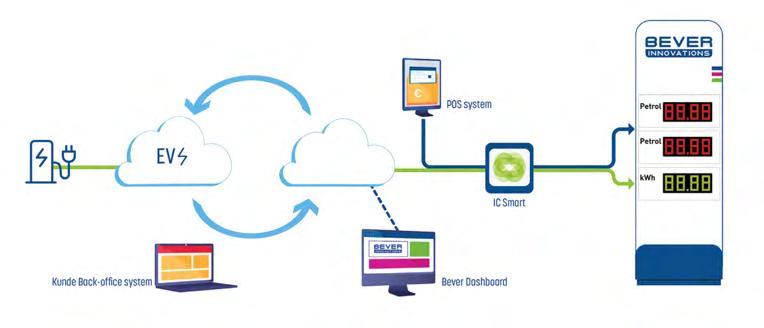
where it all started 20 years ago, whilst working with Tango, the unmanned fuel retailing network in the Netherlands. Tango needed more information from its sites to allow for better remote management.
Bever provided the solution by passing data through power lines, a relatively new concept in those days, and developed a website to provide the client with a general overview. Roller blind displays connected to the POS followed shortly afterwards.
If your business embraces EV charging at any level, IC Smart offers a cost effective, fast and easy solution to integrate pricing and charger availability into your monolith sign.
For more details or to explore the diverse possibilities, visit https://fuel.beverinnovations.com/evintegration/ or contact our sales team at info@beverinnovations.com / +31 (0)111 74 54 00.
53 APEA tel: 0345 603 5507 www.apea.org.uk Articles
bp pilots made-to-order food offer at select Wild Bean Cafés
bp is piloting a new and improved fresh food offer that can be personalised to customers’ tastes, at 10 of its Wild Bean Cafes in the UK.
The new offer supports the company’s drive for convenience growth by giving customers on-the-move made-to-order hot food options and quality coffee. This option joins classic Wild Bean Cafe menu items like the sausage roll and cheese & bacon turnover.
This pilot is an evolution of the current Wild Bean Cafe heat-toeat offer and builds on the learnings from a proof-of-concept made-to-order food offer that was tested at bp’s retail sites in Holborough and Byron in 2023.
“As the energy transition progresses, we anticipate shifts in consumer behaviour, with customers spending more time on our
forecourts charging electric vehicles. Our research has told us that these customers want great quality, tasty fresh food options and hot drinks when on the go - and that’s what we are giving them, when and where they want it,” said Jo Hayward, VP Convenience Europe at bp.
With over 50% of the company’s customers in the UK now visiting its retail sites on a shop only mission, investment in new food offers is helping to meet their changing needs. The new food for now proposition includes a broader range, improved breakfast offer and expanded lunch menu.
This initiative will be available at 10 Wild Bean Cafes in southeast England by the end of April 2024 and will continue to evolve throughout the pilot as bp receives customer feedback.
Co-op teams up with Uber Direct to enhance delivery services
Shoppers are now able to order groceries via the retailer’s online shop with delivery locally through the app’s delivery network. Coop announced an expanded access to its own online shop through a new partnership with Uber Direct, the app’s white-label delivery solution.
Uber Direct enables member-owners and customers of the chain to order groceries via its own online shop with fast and reliable delivery locally through Uber Eats’ delivery network. The trial with Uber Direct will initially enable an additional 50 stores to offer quick and convenient online home delivery.
The retailer aims to grow the access and reach of its own online
shop to around 1,000 stores by the end of the year. “Innovation and effective partnerships are a fundamental part of our approach as we grow the reach of both our own online shop, and our work with strategic partners - offering our member-owners and customers in more communities an extensive range of groceries on-demand from Co-op’s stores locally,” said Chris Conway, Coop’s eCommerce Director.
The move supports Co-op’s ambition to accelerate its share of the quick commerce market to more than 30%. Its online strategy is centred on quick convenience from its stores which are well placed at the heart of communities, with online orders picked fresh in local stores.
GRIDSERVE opens new electric retail hub at Slough Retail Park
The new site offers eight medium power charging bays, expanding its Electric Highway to over 175 locations in the UK.
Visitors to Slough Retail Park will now be able to charge their electric vehicles (EVs) as they shop with the opening of a new GRIDSERVE Electric Retail Hub.
The new charging location aims to serve those shopping at the retail park as well as those driving through the area. Equipped with eight charging bays served by four dual charging Medium Power (up to 120kW) units, integrated with both CCS and CHAdeMO connectors.
The chargers accept contactless payment and provide real-time status updates to a myriad of popular EV charging maps. “It is great to be able to offer reliable and easy electric vehicle charging to the visitors of the Slough Retail Park, where we are committed to delivering an excellent charging experience to all users. We look forward to opening more Electric Retail Hubs to support the transition to net zero transportation soon,” said Rebecca Trebble, Chief Customer Experience Officer at GRIDSERVE.
GRIDSERVE’s Electric Highway now has over 175 locations with over 1,200 charging bays, including the newly opened London Gatwick Electric Forecourt.
54APEA tel: 0345 603 5507 www.apea.org.uk UK News
News

Fire at A14 petrol station near Newmarket tackled by fire crews
Two lanes of a major road were closed after a blaze involving two cars at a petrol station.
Pictures showed plumes of black smoke and flames bursting from a car on the forecourt of a BP petrol station on the A14 eastbound, near Newmarket, Suffolk.
Cambridgeshire Fire and Rescue Service said crews were first called at 13:25 GMT on the 10th March and 20 firefighters from Cambridgeshire and Suffolk attended the scene.
The blaze was extinguished and the A14 was fully reopened after

a while. A spokesman from the Cambridgeshire fire service said: “Firefighters arrived to find a fire involving two vehicles near a petrol filling station near Newmarket.”
He said that no injuries were reported during the fire. National Highways said lane one and two of the A14 at junction 37 for Newmarket, and Exning village, were shut on the eastbound carriageway.
The AA said there was also disruption on the A142 road and the surrounding area.

55 APEA tel: 0345 603 5507 www.apea.org.uk UK News
bp to open 600 new locations around the world by 2030
Strategic expansion will start by the end of 2025 with the opening of approximately 150 sites across Poland in partnership with Auchan.
bp has revealed plans to expand its convenience store footprint with 600 new locations to be opened globally by 2030.
As published by the company in its Net Zero Progress Update 2024 report, this expansion will start with the inauguration of close to 150 sites in Poland. The first step is set to be completed by 2025, with the help of local partner Auchan by opening more than 100 EasyAuchan locations.
In recent years, the British firm has grown from 1,650 c-stores in 2019 to 2,850 by the end of 2023, growing over 70% in four years. bp expects to have 3,500 stores in operation globally by 2030.
Apart from its collaboration with Auchan, bp has also grown its convenience footprint across other markets in the last few years.
Recently, the firm acquired TravelCenters of America’s operations and has established a solid retail footprint across the United States, with brands such as ARCO, Amoco, and Thorntons.
In Europe, the owner of German service station chain Aral has also expanded its collaboration with Lekkerland with a five-year extension to their REWE To Go concept.
In addition to its convenience strategy, the mobility firm has its sights set on building its bp pulse brand, and boosting its electric vehicle (EV) charging network. Globally, the company has 29,000 EV chargers in operation and plans elevate this number up to 100,000 in 2030.
bp pulse acquires one of Europe’s largest truck stops
Mobility player plans to transform the site with mega-watt EV chargers for HGVs.
bp pulse has acquired the freehold of one of the largest truck stops in Europe, Ashford International Truckstop in Kent as part of its strategic drive to create a Europe-wide network of electric truck charging infrastructure.
Ashford International Truckstop is close to Dover, the UK’s busiest ferry port, and LeShuttle Freight via the Eurotunnel terminal in Folkestone. Approximately 3.5 million heavy goods vehicles (HGVs) travel across the channel via the port of Dover and Eurotunnel each year. The acquisition presents bp with the opportunity to help meet the comprehensive needs of UK and European HGV operators transitioning to EVs.
The site has the capacity to host approximately 20 mega-watt chargers (MCS), 10 x 400kW and 125 x 100kW chargers. This capacity is subject to power connection availability and the pace of electrification in the UK and European road freight sector. It
could enable bp pulse to install a range of charging options suitable for both on-the-go and overnight HGVs.
The first mega-watt chargers are expected to be in place from 2026. A mega-watt charger has the potential to fully charge an HGV in up to 45 minutes.
“For fleet operators to consider going electric, they must be confident that the infrastructure is in place to support them. That is why we are thrilled to have secured the land to a crucial site near Dover as we strive to meet the evolving needs of HGV operators transitioning to EVs,” said Stefan von Dobschuetz, general manager bp pulse Europe.
The 21-acre site already offers 660 secure parking bays and convenience services for HGV drivers. As part of the agreement, bp pulse will lease back the site to Ashford International Truckstop Ltd, part of GSE Group, to operate the existing site facilities and secure parking on a long-term lease. bp pulse will operate and manage the EV charging infrastructure.
Shell to sell 1,000 retail sites in two years
The energy company announced the decision through its Energy Transition Strategy report, with the aim of upgrading its retail network. Shell announced plans to sell a total of 1,000 retail sites in the next two years, divesting 500 company-owned locations a year for 2024 and 2025.
Through this sale, the energy firm aims to upgrade its retail network by adding low-carbon fuels and electric vehicle (EV) charging equipment at sites that meet the company’s investment criteria. These include China, Europe and the United States. Shell is also looking to reduce its presence in other markets as part of this strategy.
“We have other competitive advantages, such as our convenience
retail offering which allows us to offer our customers coffee, food and other convenience items as they charge their cars. As we grow our business offering charging for electric vehicles, we expect an internal rate of return of 12% or higher,” the company stated in the report.
Shell looks to expand its public charging network to operate close to 200,000 charging points by 2030, with a focus on growing markets like China and Europe. Currently, the firm offers 54,000 public charging points throughout the world.
The report also specifies the company’s intent in developing its non-energy portfolio, which includes a $2.3 billion investment from last year.
56APEA tel: 0345 603 5507 www.apea.org.uk International News

Wau fuel station burst into flames

In a rare incident, a fuel station located in the Central Business of Wau town, Western Bahr el Ghazal State, burst into flames, causing panic among residents.
Authorities said the cause of the inferno remained unclear but confirmed the destruction of two fuel tankers. Hundreds of residents thronged the area to witness the huge fire that threatened to spread to the nearby shops.
Wau town’s acting Mayor, Goc Deng Goc, told Radio Tamazuj that the trucks designated to deliver fuel in Amet of Abyei Administrative Area were refuelling some barrels when the explosion happened.
“The explosion occurred on one truck and advanced to the other,” Goc said when he visited the scene.
Contacted on the incident, State Acting Police Commissioner, Major General Simon Yasi, confirmed the explosion and said that the situation was under control.
“Yes, there was an explosion near Mayo Girl Secondary School. The cause of the fire is not known, but the fire started at a fuel station, and security forces were dispatched to secure the scene,” he said. Yasi directed fuel station operators to install fire extinguishers at their premises to mitigate such threats of fire. “All fuel stations should have fire extinguishers for their own safety and the safety of the public in case of fire outbreaks,” he said. The police boss further appealed to the national government to provide states with firefighting trucks. “There should be a provision that all states are given firefighting trucks to handle such incidents,” he said.
Meanwhile, Alfred Angok Uliny, an activist and the Executive Director of a local organisation, Alliance Land Rights South Sudan, condemned the incident, describing it as “poor planning” by the Wau town authorities.
He said fuel stations should not be allowed to operate within residential areas. “In town planning, there are residential areas, business areas, industrial areas, and agricultural areas. These things should not be mixed up, and now the lives of Wau residents are in danger as we have around 42 fuel stations within residential areas,” Uliny said.
He appealed to the town management to suspend any licenses given to fuel stations to operate in inappropriate places.
57 APEA tel: 0345 603 5507 www.apea.org.uk International News
SQRL to open all 210 former Mountain Express locations
The retailer acquired these locations after signing a master lease agreement with the company in September of last year. SQRL Service Stations and Blue Owl Capital have announced that all 210 former Mountain Express locations will be opened in the next three months.
Both companies have signed a master lease on all sites in September of 2023, with plans to fully remodel and rebrand all stores. As part of this deal, the retailer acquired these sites and expanded its current retail footprint up to over 350 sites across
the United States. “By expanding our network of fuel stations, SQRL will enhance commute or long-distance journeys. Our new stores will be seamlessly integrated into SQRL’s existing infrastructure, ensuring a smooth transition to service our customers,” said Blake Smith, founder of SQRL, at the time of the acquisition.
SQRL Holdings is a food and fuel retailer that operates more than 350 locations throughout 14 states, serving both mainstream and rural communities.
Vivo Energy Mozambique opens new Engen station
Vivo Energy Mozambique inaugurated the first service station under the Engen brand in 2024. The service station is the 9th service station located in Maputo.
“These infrastructures are the result of the commitment to grow the network of service stations and increase the range of petroleum products on offer with the highest quality standards and increasingly efficient services,” said Moussa Konate, Managing Director at Vivo Energy Mozambique.
“This expansion of the service station network demonstrates Vivo Energy Mozambique’s ongoing commitment to providing high quality petroleum products and efficient services,” he added.
By investing in the development of this kind of infrastructure, the company aims to meet the mobility needs of Mozambicans, and a significant contribution to the country’s economic and social development. The company has 43 service stations in Mozambique.
E.ON builds hydrogen filling station in Essen
E.ON is embarking on the construction of a public hydrogen filling station for heavy goods vehicles and cars in Essen’s city harbour. Thanks to a €2.3 million grant from the state of North RhineWestphalia, the company is strengthening hydrogen mobility in the region and supporting the transition to nationwide sustainable mobility.
This is part of the state’s funding program for the construction of hydrogen refuelling infrastructure across the region. “With the help of the Ministry of Economic Affairs, Industry, Climate Protection
and Energy, we can respond to the great demand from our customers for refuelling facilities for fuel cell trucks. In close cooperation with the state of NRW, we are thus achieving a milestone for the entire region,” said Carsten Borchers, Managing Director at E.ON Hydrogen.
The Rhine-Ruhr region is a key transportation hub in Germany. By using a 350 and a 700 bar pump at the planned hydrogen filling station, E.ON wants to enable the refuelling of all fuel cell vehicles available on the market.
ENOC partners with Dubai Taxi to provide refuelling services
The agreement extends to providing fuel delivery services for school buses during off-peak hours at designated company bus stops via eLink mobile stations.
ENOC Group has signed a strategic partnership with Dubai Taxi Company (DTC) to equip its fleet of 7,800 vehicles with mobile, secure, and automated refuelling services.
The collaboration is set to enhance the operational efficiency of the fleet, optimise costs, deliver comprehensive data, and develop refuelling operations with services augmented by artificial intelligence (AI).
ENOC will provide refuelling services for all Dubai Taxi fleet vehicles, spanning taxis, airport taxis, limousines, and delivery bikes. Moreover, the agreement extends to providing fuel delivery
services for school buses during off-peak hours at designated company bus stops via eLink mobile stations.
“As one of the key players in the industry, we deliver innovative solutions such as ENOC Link Fuel Delivery and the Vehicle Identification System (ViP), granting our partners an allencompassing perspective on refuelling options powered by sophisticated AI-driven services,” said Humaid Al Falasi, Group CEO of ENOC.
Since the beginning of 2024, Dubai Taxi has expanded its fleet by adding 445 taxis. This expansion enhances its spectrum of mobility solutions across four key business sectors: standard taxi services featuring a vast and eco-friendly fleet, limousine services catering to VIP clients with drivers for a premium experience, along with comprehensive bus services and corporate delivery solutions.
58APEA tel: 0345 603 5507 www.apea.org.uk International News

Trafigura to acquire Greenergy
As one of Europe’s largest suppliers of biofuels, the purchase will enable Trafigura to strengthen its fuel supply operations across the continent.
Trafigura Group will acquire Greenergy’s European business from Brookfield Asset Management.
The UK-based supplier of road fuels and major biodiesel producer was initially founded in 1992 to supply diesel with lower emissions. Today, the company is one of Europe’s largest suppliers of biofuels with manufacturing plants in the UK and the Netherlands and a leading distributor of road fuels in the UK.
“As Europe transitions to a lower carbon future and the refining industry adapts to changing market dynamics, companies like
Greenergy become increasingly important,” said Ben Luckock, Global Head of Oil at Trafigura.
This acquisition will let Trafigura strengthen its fuel supply operations in Europe and to add the physical production and distribution of renewable fuels to its biofuels business.
“Trafigura brings additional understanding of global supply chains and energy markets and a track record of investing in renewables. This will further enhance our offer to customers through the energy transition and beyond,” stated Christian Flach, Chief Executive at Greenergy.
Post acquisition, the company will continue to be led by its current management team.
Westfalen unveils first hydrogen station in Alsace
The site was built in cooperation with Réseau Gaz Naturel Strasbourg and will supply energy for the EU Parliament’s vehicle fleet.
Members of the European Union can now see for themselves that hydrogen is a reliable alternative for the mobility sector during their meeting weeks in Strasbourg. The municipal gas company of the city, Réseau Gaz Naturel Strasbourg (R-GDS), in cooperation with the Westfalen Group, has built a new hydrogen fuelling facility.
Both companies now offer H2 refuelling for the European Parliament’s vehicle fleet, after the roll out of the site following a test phase, as the first hydrogen filling station in Alsace.
Westfalen can rely on its own fleet of hydrogen trailers for the
supply, with regular delivery to Strasbourg from Germany. The company has over 40 years of experience in dealing with hydrogen as an energy source.
“We are convinced that there is no way around hydrogen as a sustainable energy source for a future-proof supply. We are therefore all the more pleased that we were able to convince RGDS, a renowned energy company, of our range of services,” said Andreas Weisheit, Head of Westfalen’s Gases Division.
The Strasbourg-Meinau hydrogen refuelling station on the FrenchGerman border is part of the H2ME2 project, which was funded by the Clean Hydrogen Partnership. The consortium is supported by the European Union’s 2020 research and innovation program, Hydrogen Europe and Hydrogen Europe Research.
ChargePoint launches charging solution for EV rental fleets
The company has partnered with GATE to develop a solution aimed at simplifying management and charging operations for its partner’s rental services.
ChargePoint has partnered with GATE to launch a collaboration to simplify fleet management and charging of rental electric vehicles (EV).
GATE - Green and Advanced Transport Ecosystem- is the company founded by Iveco Group to accelerate the transition to sustainable commercial mobility through a medium-long-term pay-per-use rental formula.
The two companies will work together to offer bespoke charging solutions that directly address the specific needs of GATE customers. This will be the first commercial application of the
software that the charger manufacturer currently deploys for global passenger fleet providers and OEMs.
“ChargePoint has proven experience which will enable this implementation at a faster pace across multiple customer applications and use cases,” said André ten Bloemendal, Senior Vice President for Europe at ChargePoint.
ChargePoint will provide integrated charging services to simplify the electrification journey for GATE’s customers. These include consulting for the supply and installation of charging stations, technical assistance before and after sale, as well as software to manage the charging stations on an ongoing basis.
The offerings are now available in Italy and will roll out across Europe in sync with GATE’s own operations.
60APEA tel: 0345 603 5507 www.apea.org.uk International News

Viva Energy ramps up its renewable energy purchasing
The company has signed a new power purchase deal with ACCIONA Energia to power its operations across Australia.
Viva Energy has signed a new 10-year Power Purchase Agreement (PPA) with leading renewable energy generator ACCIONA Energia. The PPA involves renewable electricity generated from the Mt Gellibrand Wind Farm near Colac, Victoria.
The deal is the largest electricity and environmental certificate contract completed by the mobility company, providing the power that is critical to business operations bundled with Large-Scale Generation Certificates (LGCs).
The agreement provides a substantial quantity of Viva Energy’s power requirements from Acciona’s operating wind farm assets
and will assist Viva Energy in meeting its group-wide emissionreduction ambitions. “This new agreement provides both substantial power supply and LGCs to Viva Energy, supporting our ambition to reduce scope 2 emissions across our various businesses as well as providing a long-term commitment to local renewable energy generation in the greater Geelong region,” said Lachlan Pfeiffer, Viva Energy Chief Business Development and Sustainability Officer.
This PPA with ACCIONA Energia complements another renewable energy PPA with CleanCo Queensland which provides the power for over 110 Coles Express sites in Queensland. CleanCo has a portfolio of low-emission and renewable energy assets which includes long-term PPAs with renewable energy projects such as the Western Downs Green Energy Hub near Chinchilla.
ADNOC Distribution targets 1,000 stations in 5-year growth strategy
The company will invest $250 to $300 million annually to achieve a 20% increase from its current fuel retail network of 840 stations.
ADNOC Distribution has revealed its five-year growth strategy, which involves expanding its fuel retail network up to 1,000 service stations.
This 20% growth from its current 840 stations is set to be achieved by allocating $250 million to $300 million annually for CAPEX, with 70% focused on growth. A higher number of stations has been planned to reach a 50% rise in non-fuel transactions and a 25% increase in convenience store purchases.
ADNOC’s subsidiary has also revealed other expansion strategies, such as scaling up a franchise and sub-franchise model. “Since its
market debut in late 2017, the company has delivered robust financial performance and doubled shareholder value. The company is well positioned to take advantage of evolving energy markets and enter a new phase of growth,” said Bader Saeed Al Lamki, CEO of ADNOC Distribution.
In addition, the firm expects to operate a minimum of 500 fast and superfast electric vehicle (EV) charging points, as it aims to create a national EV charging network. This number amounts to a tenthfold of last year’s increase in e-mobility services for the chain.
ADNOC’s growth plans also include increasing the contribution from international operations in Saudi Arabia and Egypt and improving its operational efficiency, targeting up to $50 million of additional savings by 2028.
OOMCO expands exclusive fuel to 10 more stations in Oman
Ultimax 98 was launched back in 2018 and is now available at a total of 100 locations across the country. Oman Oil Marketing Company (OOMCO) will add its exclusive Ultimax 98 fuel to 10 more service stations across Oman.
The fuel is now available at 100 locations of the chain, offering the higher-octane unleaded fuel to customers throughout the country. The announcement came during an event held in collaboration with the Oman Skyline GTR Club and One More Drive.
Celebrated at OOMCO’s Al Ansab service station, the company focused on showcasing its commitment to providing customers with premium fuel that supports the optimum performance of car engines.
“We pride ourselves for being the only company in Oman that
provides Ultimax 98-Octane fuel to our customers. This premium fuel provides enhanced engine performance, fuel efficiency, maximum engine protection, and less environmental impact thanks to its reduced emission rates,” said Tarik Mohammed Al Junaidi, Chief Executive Officer of Oman Oil Marketing Company.
The firm demonstrated the quality of its Ultimax 98 fuel by showcasing its performance during the event. Ultimax 98-Octane was launched back in 2018, as part of the company’s goal to become the most customer-centric oil fuel marketer in the region by 2027.
In recent years, OOMCO has been expanding to other countries, diversifying its products and services, and implementing progressive eco-conscious technologies while staying true to its roots and core values.
62APEA tel: 0345 603 5507 www.apea.org.uk International News
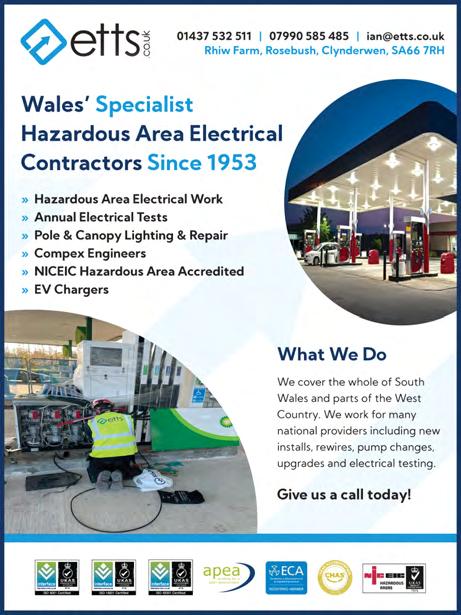



63 APEA tel: 0345 603 5507 www.apea.org.uk
Press Releases
Strategic partnership announced between e-power® and Commercial Fuel Solutions®
A strategic partnership between Commercial Fuel Solutions Limited and European generator manufacturer e-power® has been announced.
The official agreement places responsibility on Commercial Fuel Solutions Limited to operate as the exclusive distributor for the Belgian manufacturer’s range of hydrogen electrical power generators within the UK and Ireland.
Recognised for industrial electrical power generators for over 30 years, epower® started trading as Europower in 1990 in Limburg, Belgium. In 1994, the company became the first European manufacturer to achieve ISO accreditation for production and quality and in 2022, they launched Europe’s first commercially available generator using an internal combustion engine fuelled by gaseous hydrogen.
e-power selected Commercial Fuel Solutions Limited to become their exclusive UK distributor for their hydrogen-powered solutions in recognition of their pioneering efforts to decarbonise construction and heavy transport industries through hydrogen-fuelled technology.
Joe Gavin, Global Director of Sustainability for e-power, stated, “Commercial Fuel Solutions (Limited) stood out from vying agents due to their intrinsic knowledge of hydrogen safety”. He continued “their unique position as established suppliers of commercial refuelling solutions made them an obvious choice, we are excited to be working with them in this emerging sector”.
Robin Futcher, Managing Director of Commercial Fuel Solutions, also commented, “We are equally excited to have this opportunity to represent a dynamic and forward-thinking company who are clearly focused on producing innovative products that harness the power of hydrogen”.


64APEA tel: 0345 603 5507 www.apea.org.uk Press Releases
Commercial Fuel Solutions supported e-power at Executive Hire Show in Coventry, where the latest model of e-power’s 45 kVA Hydrogen Internal Combustion Engine Power Generator were on display.
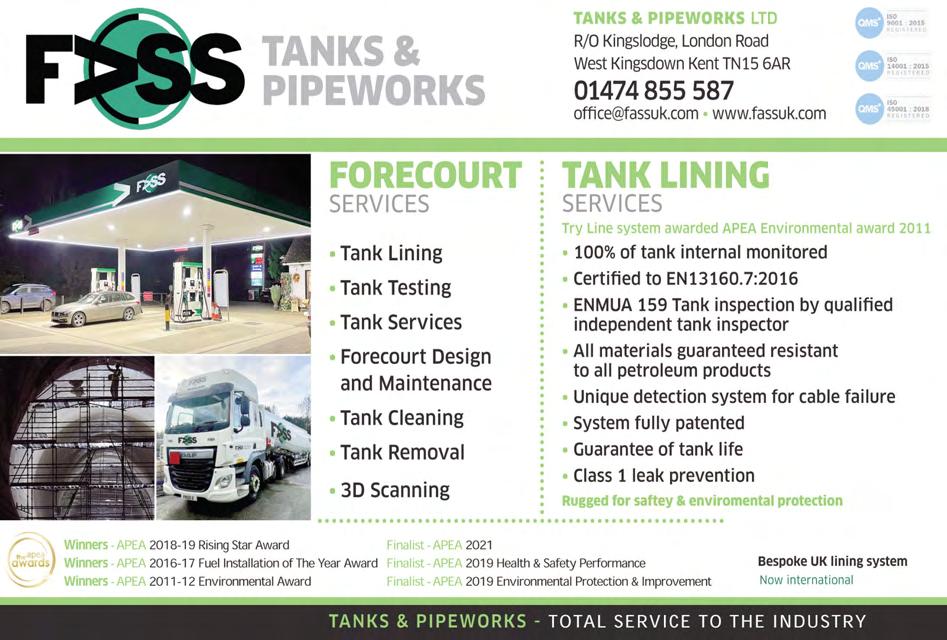
OPW Acquires Transchem Group
Transchem expands OPW’s vehicle wash portfolio to include chemical solutions.
Hamilton, Ohio – Jan. 18, 2024 – OPW announced that it has acquired Transchem Group (“Transchem”), one of the largest suppliers of cleaning, water and site management solutions for the car wash industry. Transchem will now become part of OPW’s Vehicle Wash Solutions platform (“OPW VWS”), which also includes renowned brands like PDQ, Belanger and Innovative Control Systems (“ICS”).
Headquartered in Cambridge, Ontario, Transchem offers a variety of chemical and cleaning products including premium brands, such as Turtle Wax® Pro and Autolux chemistry; True Vue 2 chemical management; ClearWash water reclaim systems; and Soax pressure washers. Transchem also offers private label and custom chemical blending solutions, as well as Digital Mosaic, a proven technology platform that helps car wash operators manage their subscriptions and loyalty programs.
“We are excited to have Transchem join the OPW team, expanding OPW VWS’ portfolio of world-class solutions that helps our customers’ car washes perform better, safer and more sustainably,” said Keith Moye, Vice President and General Manager of OPW Vehicle Wash Solutions. “With Transchem, OPW VWS will now offer a variety of chemistry solutions to help drive success for car wash operators around the world. And like OPW VWS, Transchem
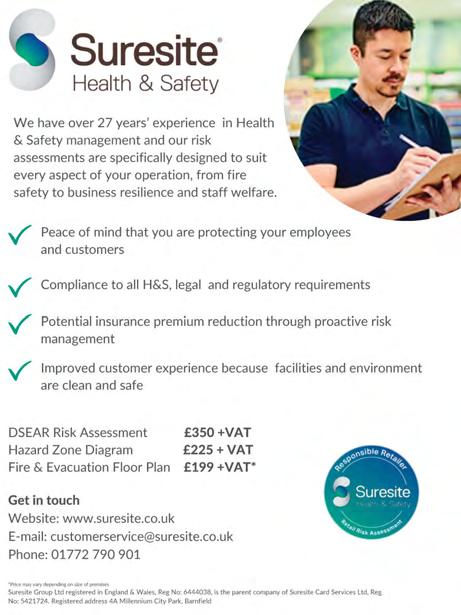
65 APEA tel: 0345 603 5507 www.apea.org.uk
has been serving the vehicle wash industry for decades with an intense focus on crafting products that help keep people and the environment safe.”
OPW’s portfolio of vehicle wash solutions is one of the most comprehensive in the industry, offering tunnel and in-bay automatic wash systems, payment terminals, process controls, management software, automation systems and now chemistry and water reclaim systems.
“At Transchem we pride ourselves on building true long-term
partnerships with our customers, and we are excited to join a company that shares the same values,” said Nathan Ewing, President of Transchem. “OPW Vehicle Wash Solutions is the perfect partner to continue driving Transchem’s growth and maintaining high standards of customer service for our existing and new customers.”
To learn more about the complete range of vehicle wash equipment and payment systems offered by the companies of OPW Vehicle Wash Solutions, please visit opwvws.com.
Active Connect electrical contractors introduce hydrotreated vegetable oil to reduce vehicle emissions

Active Connect are excited to announce that all their non-electric fleet will now use Hydrotreated Vegetable Oil. The installation of a HVO Tank at their headquarters in Surrey will help reduce their net greenhouse emissions by up to 90% and marks a significant step on their journey to sustainability.
HVO fuel is synthesised from 100% renewable raw materials such as frying and cooking oils. This waste material is then collected and put through a hydrogen-based production process to create an alternative, stable, renewable and sustainable paraffinic diesel.
Business Director, Drew Minty says: “Our last annual sustainability report identified travel and vehicle use as our main contributor towards carbon emissions. The introduction of HVO is another milestone towards our active8zero directive which commits us to achieving carbon neutrality by 2028 and aligns us with our key client’s procurement positions and their relative sustainable supply chain requirements.”
You can learn more about their journey to sustainability and active8zero directive at www.activeconnect.co.uk/sustainability
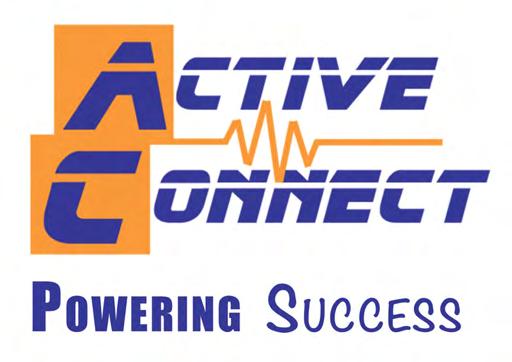
Improved test measure/proving can range from Hytek

Since 2014 Hytek has seen great success with their range of affordable, high quality test measure cans. The cans have been popular with engineers who appreciate their durable stainless steel construction and suitability for a range of fuels and AdBlue®.
These cans feature a screen-printed scale that is resistant to petrol and diesel, ensuring that no matter what the conditions, an accurate measurement is possible. This scale is available on 5L, 10L, and 20L test cans.
66APEA tel: 0345 603 5507 www.apea.org.uk Press Releases

Over the years we have tweaked the design as a result of direct customer feedback. Hytek Marketing and Commercial Director Andy Seal says “When we talk to our distributors about products, we take their feedback seriously. Thanks to those conversations we were able to upgrade this product range to perform better than ever.”
All three sizes are made of tough and durable 304 stainless steel and can be used with various fuels such as diesel, biodiesel, petrol, kerosene and AdBlue®. Each model is available with a UK weights and measures certificate option to verify their accuracy to test fuel dispensing equipment to the accepted levels. With a scale in millilitres, the test measuring cans are designed to be easy to use; they all feature separate lifting and emptying handles and include a clear and easy to read gauge.
A protective stainless-steel carry case is available for each size, that both protects the can, and makes them easy to store. Another option is the stainless-steel anti-splash funnel (15” diameter), featuring an inward lip that prevents fuels from splashing the engineer when the can is being filled.
Hytek carries the UK Weights & Measures certified versions for same day dispatch, as a replacement can is often required as a matter of urgency. All Hytek products are available for same-day despatch and trade accounts can be opened on request.
N.B. If using with AdBlue® do not cross contaminate. AdBlue® is a registered trade mark of the Verband der Automobilindustrie e.V.
Hytek only supply the trade, for your copy of their latest product catalogue please email sales@hytekgb.com or call +44 (0) 1279 815 600.

67 APEA tel: 0345 603 5507 www.apea.org.uk Press Releases
Branches
North West



The Autumn 2023 NW Branch meeting and AGM was held on the 28th September in a corporate box, high above the glorious surrounds of Haydock Racecourse. This was the first ‘in person’ meeting held by the branch since 2019 and saw the election of a new Chairman in Dave Dodd (Flintshire Council) and the re-election of Andy Myers (Branch Secretary) and Neil Simms (Branch Representative) to their existing positions.
The session began with a general update by Neil Simms, outlining the benefits that APEA membership can bring. A financial update was provided by Andy Myers, whereby it was agreed that the figures presented were a true reflection of the group’s position at that time. Dave Morris from Powys Council gave an update from a PELG and enforcement perspective, informing the group of the latest review of PCR 2014, as well as issues and prospective guidance around mobile refuelling and the complications of overnight fuel storage relating to car rallies. The branch was informed of a forthcoming flowchart that may aid in deciding when a petroleum certificate is required, as well as the potential for some training around the industry’s Red Guide.
Lawrence Black, Secretary of the British Fireworks Association and Technical Manager with Black Cat Fireworks, was up next to give a fascinating, if somewhat concerning, insight into how it is difficult to ban the sale of fireworks outright, giving examples of potentially lethal fireworks being illegally imported from abroad. Many of these fireworks ultimately end up being sold via social media outlets and in one case, were even being sold from a vehicle parked on a petrol station forecourt. Video clips showed examples of cities that had previously banned fireworks and the extent of non-compliance that had followed. Along with legislative updates, advice was given regarding the correct disposal of seized fireworks and what Lawrence considered to be the most dangerous firework readily available to the public. His underlying message was to ‘ban the yob, not the firework.’ It was this message for which he has campaigned to government with the intention of them increasing resources for enforcement authorities across the country.
Andy Myers then gave an interesting insight into the world of underground tank removals and the risks involved in doing so, giving examples of where tanks had been removed many years ago, only to be reburied on the same site, away from the forecourt. Issues re other hidden hazards, such as asbestos pipes, the requirement for sub-scans and the isolation of electricity sources were also covered. The need for coordination to allow grade out and manageable uplift, as well as cleaning the tank ahead of refuelling, and the recording of waste and validation processes were also covered.
Following Andy’s presentation, Neil Simms gave a brief health and safety update regarding employer legal responsibilities to non-employees, before Andy was back to present his second topic of the day – the installation of electric vehicle chargers on forecourts. This highlighted some of the pitfalls and restrictions when it came to such installations, along with the necessary coordination with various parties, including planning departments regarding changes in the use of land, potential noise and light pollution, as well as the potential for damage to trees and associated root systems.
All in all, the day was a success, with an opportunity to share concerns, explore common issues and identify relevant solutions, all whilst gaining required CPD and enjoying a spot of lunch! Here’s to the next one.
68APEA tel: 0345 603 5507 www.apea.org.uk Branches
Andy Myers Lawrence Black
Haydock Racecourse

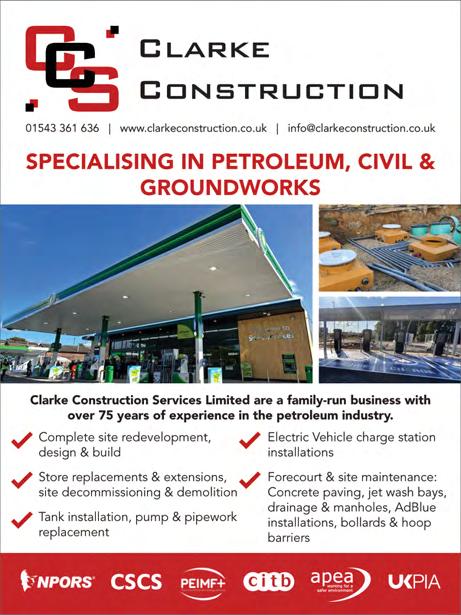

69 APEA tel: 0345 603 5507 www.apea.org.uk
Southern
The APEA Southern Branch recently held our online AGM and branch meeting.
The branch continues to operate successfully, and in addition to carrying out the branch business for the year we were delighted to welcome Alex Boudry of PFS Fueltec and Graeme Warnell of EV-EXBOX.
Alex presented on ‘Water Ingress Into Sumps on Forecourts’ and provided interesting and relevant solutions in dealing with this.
Graeme’s topic was ‘Risk Assessment for EV Charging Infrastructure.’ As APEA Innovation Award winners, he explained where the EV charging industry is lacking in competent risk assessment and an understanding of all the risks that need to be
considered as part of the clean energy transition. A very thought provoking presentation.
The branch would like to thank both speakers for their time and expertise in producing presentations which were very well received by those watching.
We are pleased to announce that our next branch meeting will be a physical meeting on subjects relating to tanks, to be held at The Tank Museum, Bovington, Dorset on Tuesday 21st May 2024. Keep the date clear - more details to follow!
David Sommers Branch Secretary
Training
London Fire Brigade Training
By Brian Humm, The Bulletin Editor/APEA Trainer
During January, February and March this year the APEA training team delivered a selection of courses to the petroleum section of the London Fire Brigade.
The courses included Wetstock, DSEAR, LPG, Electrical Awareness and the 3 day Audit and Inspection course.
All the courses were well received and all the delegates received their CPD certificates at the end of each course. For me it was a blast from the past as the venue was where I was based at the end of my career in the LFB. I would like to thank the LFB team, especially Tim, for their warm welcome and hospitality during the training days.

70APEA tel: 0345 603 5507 www.apea.org.uk Branches/Training
Delegates from the 3 day Audit and Inspection training course for London Fire Brigade


71 Training
Delegates from the Safe Installation and Use of LPG training course for London Fire Brigade
APEA 3-day Petrol Filling Station Training Course in Nicosia, Cyprus
By Jamie Thompson, APEA Technical Chairman/APEA Trainer
In February this year APEA Trainers travelled to Nicosia to deliver training for 32 delegates for Hellenic Petroleum with delegates from Cyprus, Serbia, Montenegro, Croatia, Bulgaria, Greece, and Macedonia.
We were welcomed by some familiar faces with George Gregoras and Michaelis Heraclides who organised the course for their colleagues from Cyprus and the Balkans.
George welcomed the delegates explaining that all countries have had problems with leaking installations due to past practices and this course aims to make sure that by following the Blue Book these will ensure safer filling station construction.
The following three days we went through some 25 presentations, videos, and carried out a desk top risk assessment, culminating in
a site visit carrying out a petroleum inspection on a site recently constructed and with all inspections some issues were found and rigorously discussed by the delegates. Hellenic had also arranged for a dinner one evening in a traditional “Goat Farm” to the north of Nicosia in the UN Buffer Zone where good local grown food was enjoyed by all and Petrol Stations were part of the discussions.
At the end of each day the delegates all took test papers and a high standard was achieved. The site visit lasted all morning and the site was critiqued by the delegates who managed to find some concerns which were discussed on our return to the classroom.
At the end of the course delegates were presented with their certificates and we have a photos of some of the candidates. One surprise in all the years I have been delivering this training I unexpectedly received a big hug from one delegate as a thanks!!

72APEA tel: 0345 603 5507 www.apea.org.uk Training
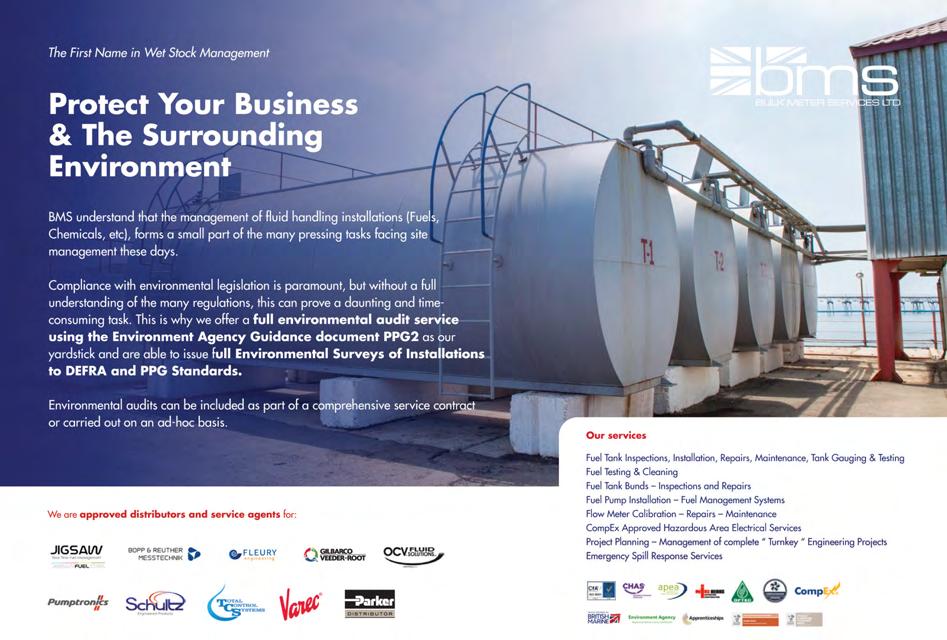

73 APEA tel: 0345 603 5507 www.apea.org.uk Training
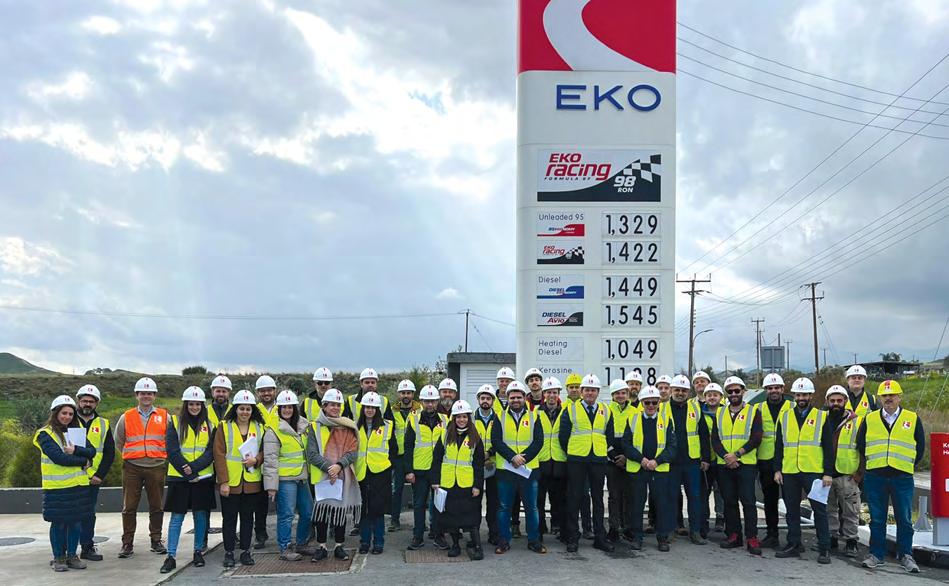


74APEA tel: 0345 603 5507 www.apea.org.uk Training
Delegates from 3 day Audit and Inspection training course in Cyprus

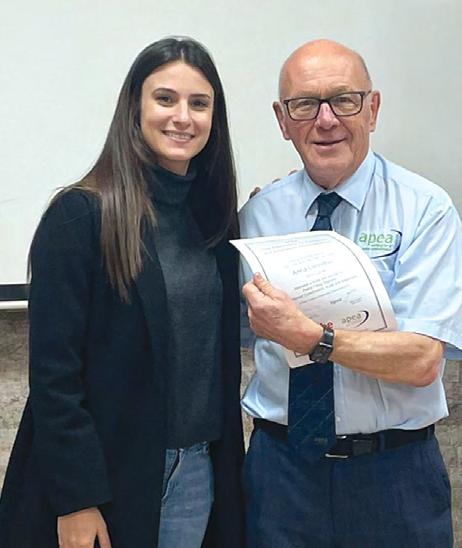


76APEA tel: 0345 603 5507 www.apea.org.uk Training
West Yorkshire Petrol Station Training
By Jamie Thompson, APEA Technical Chairman/APEA Trainer

In February APEA trainers visited Wakefield to complete a 3-day petrol filling Ssation training with the Petroleum Enforcing Authority and also three people from an enlightened dealer, Valli Forecourts Ltd, who wished to make sure their staff were kept up to date with present day practices and operating their filling stations correctly.
Incorporated in 2002, Valli Forecourts is an established, family-owned business based in Leeds, West Yorkshire. The company originated when brothers Haroon and Farook became commission operators in 1993, taking on sites with Margram, Shell and Esso. The turning point was in 2002 when BP decided to sell some of their network. Valli Forecourts was established with the acquisition of four sites and then a further two within months. The rest, as they say, is history! Valli Forecourts currently operates a diversified portfolio of 16 petrol forecourts and convenience stores throughout England, from Birmingham to Stockton-on-Tees and in between. Since 2008, Valli Forecourts has undertaken a massive investment programme. Almost all of the 16 petrol forecourts and convenience stores have been knocked down and re-built. In their place now stand fresh, modern, state of the art, large forecourts and convenient stores (up to 3,000 sq. ft) with lots of parking, a great valeting offer, ATMs and food-togo outlets such as Subway and Costa.
The course held at the Wakefield fire station was well received and a visit to a Valli Forecourt in Wakefield was interesting enabling the operators to get a view of the Petroleum Enforcers and then the Enforcers hearing of the issues that operators have.
The site visit brought up some interesting issues which were discussed back in the classroom and we felt that this type of training with both regulators and site operators benefitted both organisations.

77 APEA tel: 0345 603 5507 www.apea.org.uk Training

Training course dates and locations 2024
3 Day Combined Petrol Filling Stations –Construction, Audit and Inspection Course
10 - 12 June Solihull
2 - 4 September Stansted Airport
2 day Electrical Installations - An Awareness
3 - 4 September Swindon
Explosives and Fireworks
4 October Stansted Airport
Wetstock Management
25 SeptemberStansted Airport
DSEAR
11 September Stansted Airport
Course Fees
3
3 day, day delegate rate
Petroleum (Consolidation) Regulations 2014
6 September Stansted Airport
Petrol Filling Station courses on request
Vapour Recovery Installations
Leak Investigation
Enforcement Procedures
Safe Installation and Use of LPG
Please contact the APEA office for a quotation for a bespoke course we can run at your offices, for any of the courses listed below, at admin@apea.org.uk, with an approximate number of delegates and preferred dates.
2 day course with accommodation£650.00£750.00
2 day, day delegate rate
1 day course
Prices excluding VAT.
More information and booking details on the “Training” page at www.apea.org.uk.
Anyone booking a training course that is not an APEA member will automatically receive complimentary “Individual” membership to the APEA for one year.
APEA MemberNon member
£1120.00
day course with accommodation£1020.00
£810.00 £910.00
£550.00 £650.00
£260.00 £310.00
78APEA tel: 0345 603 5507
Training
www.apea.org.uk
Delegates from 3 day Audit and Inspection training course in West Yorkshire
Courses will be designed around the (4th edition) Blue Book Guidance for the Design, Construction, Modification, Maintenance and Decommissioning of Filling Stations (May 2018).
A hard copy and a pdf version of the 4th Edition is available from the Publications page of the APEA website at www.apea.org.uk
The hardcopy is £75.00 to APEA Members and £150.00 to non APEA members. There is no VAT charged on the hardcopy or pdf formats. The pdf version can be purchased with a licence for individual use and cannot be shared or printed. It is strongly recommended that attendees have access to this document during courses.
Online Training courses
For details of this and any other training enquiry, please contact: Jane Mardell - APEA Business Manager
email: admin@apea.org.uk
Tel: + 44 (0) 345 603 5507
or
Thomas Daly (Training Committee Chairman)
Tel: +353 876899281
email: thomasdaly@apea.org.uk
To book go to the Training page on the APEA website at www.apea.org.uk for the link or to https://apea.org.uk/pages/training or https://apea.mykademy.com/
Key Areas of a Filling Station £50
The Future of Fuels £50
Drainage, Vapour Recovery and Leak Detection £50
Road Tanker Delivery and Consignor Requirements £50
Petroleum (Consolidation) Regulation 2014 £50
Dangerous Substances and Explosive Atmospheres Regulations 2002 £50
Inspection Preparation Online Training £50
The Red Guide £50
8in1 APEA Full Course Bundle £250 8 Courses
Key Areas of the Filling Station
The Future of Fuels
Drainage, Vapour Recovery and Leak Detection Road Tanker Delivery & Consignor Requirements
Petroleum (Consolidation) Regulation 2014
Dangerous Substances and Explosive Atmospheres Regulation 2002
Preparing for Inspection
The Red Guide

Ask the Experts
By Brian Humm, Editor of The Bulletin and APEA Trainer
Hi, I’m not sure if I am asking the right people but, we have been requested to upgrade a car park at a music school and there is a requirement for a petrol separator to be installed. Firstly what type of separator do we require, and will we need to undertake a DSEAR risk assessment once completed?
All drainage within the UK is subject to the building regulations, approved document H. This tells you the requirements for the separator and associated pipework; it gives the appropriate flow rates and falls etc (even down to the plastic drainage pipework and seals resistant to petrol) to ensure that the area drains correctly, the standard for separators in EN858-1 and as long as the
manufacturer confirms that this standard is met then this would suffice. The separator will need to be installed to the manufacturer’s instructions, also the standard requires that an audible alarm be connected to show that the separator requires attention/cleaning.
With regards to DSEAR then this area can de designated as a workplace whilst maintenance etc. is being carried out, therefore a DSEAR assessment under Regulation 5 will be required, as will a diagram of the hazardous area around the separator chamber and a vent pipe will be required to be displayed (Regulation 7).
79 APEA tel: 0345 603
www.apea.org.uk Training/Ask the Experts
5507









 Michael O’Connell APEA Chairman
Michael O’Connell APEA Chairman




 Jane Mardell Business Manager
Jane Mardell Business Manager






























































































































